In this in-depth review, we will take a look at all the technical and artistic parameters which help to define a lens. Read on to find out everything there is to know about the Sony FE 28-60mm F4-F5.6!
Introduction
When Sony launched the diminutive A7C full frame camera in Fall 2020, it was announced with the even smaller FE 28-60mm F4-F5.6 lens.
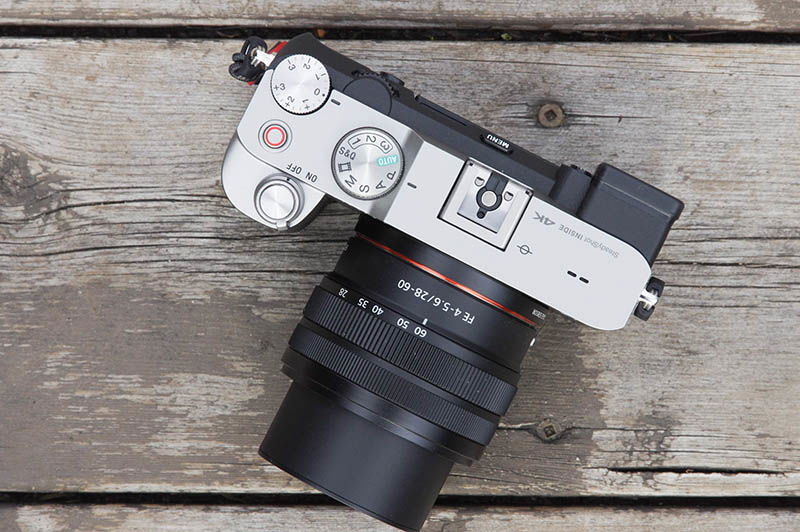
At first glance, this lens comes with rather pedestrian specs, namely a short focal range and slow maximum aperture. Despite these limitations, or maybe thanks to them, the FE 28-60mm is actually a lens which makes a lot of sense. With a retracting, weather resistant body, silent and fast AF, and a very low weight, this lens is the summum of the carry-anywhere zoom. Coupled with the A7C, or any of Sony’s APS-C bodies, the FE 28-60mm creates a small package, easy to carry anywhere while still delivering better than average performances.
Table of Contents[Hide][Show]
Specifications
| Lens Name | FE 28-60mm F4-F5.6 (SEL2860) |
| Optical formula | 8 elements in 7 groups |
| Image circle | Full frame |
| Field of view | FF: 75 – 40° APS-C: 54 – 27° |
| Aperture range | F4/F22 – F5.6/F32 |
| Aperture blades | 7, curved |
| Aperture ring | No |
| Max magnification | 0.16x |
| Minimum focus distance | Wide 0.3 m (0.99 ft), Tele 0.45 m (1.48 ft) |
| Internal focus | Yes |
| Filter thread diameter | 40.5mm |
| Lens cap | Plastic, clip-on |
| Lens hood | NA |
| Diameter x Length (collapsed) | 66.6 x 45 mm (2.62 x 1.77 in) |
| Weight | 167 g (5.9 oz) |
| Price (US MSRP) | $498 (purchased separately) $300 (purchased as kit) |
Construction and Handling
In this section, we take a look at the physical characteristics of the FE 28-60mm.
Front Element
The front of the lens bears the lens’s name, filter diameter, and lose focusing distances. The glass takes up a relatively small part of the total front surface.
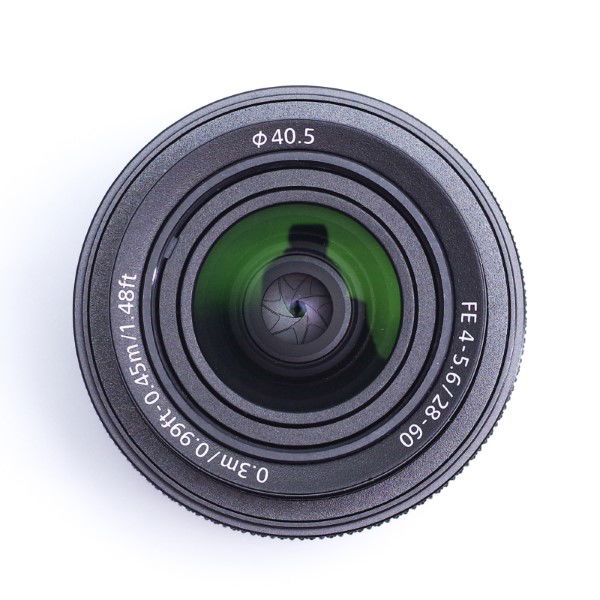
The lens uses a rather uncommon 40.5mm filter thread. The small lens cap is plastic.
Lens Body
When retracted, the FE 28-60mm is smaller than many primes. It’s hard to believe that this is a full frame zoom!

The bottom of the body, near the camera mount, bears the lens name and aperture range. Right above, the lens barrel widens a bit towards the zoom ring. This ring has 5 markings between 28 and 60mm. It also serves to collapse or extend the lens. When extended, the center shaft protrudes significantly. Note that, when the lens is retracted, the camera will inform the user of this, and refuse to take a picture.
The lens is at its longest at 28mm, getting shorter towards the middle of the range and extending a bit again closer to 60mm. The zoom ring is adequate, with a good level of stiffness and no wobble.
Right at the top of the lens is the focus ring. Like other Sony lenses, the FE 28-60mm uses focus by wire and, while it does offer manual focus override, this must be activated in a menu and cannot be used with continuous AF. There is no switch for manual focus on the lens.
Both rings are ribbed and easy to find, although the zoom ring is intuitively easier to locate when looking through the viewfinder.

On the left side (when mounted) is a white dot helping with alignment when mounting. On the back of the lens, close to the bottom, is a label with the model, brand, serial number and various regulations markings such as CE.
The lens does not extend when focusing.
Aperture
The Sony FE 28-60mm uses 7 curved aperture blades.

Lens Mount
The lens mount is metal, and features a black o-ring to protect against water ingress.
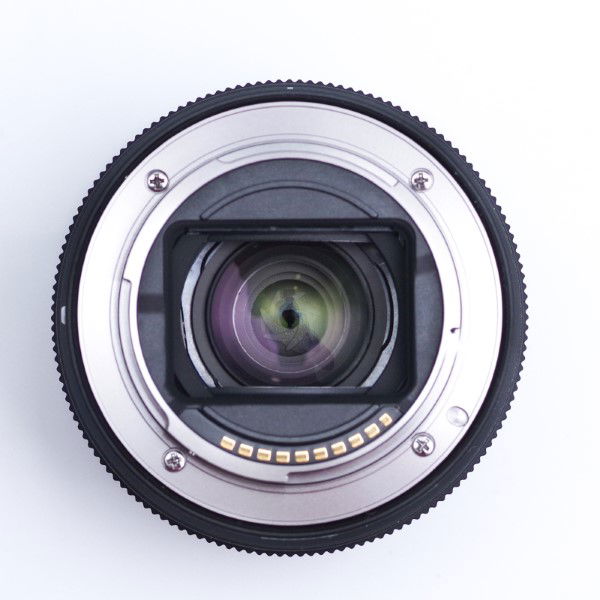
There is a rectangular cut-out on the back, to diminish stray reflections. To some extent, it serves a function akin to a lens hood.
Mounted On Camera
The FE 28-60mm looks right at home on the Sony A7C. It will look minuscule on larger bodies.
Focusing
Focusing with the FE 28-60mm is a breeze, on par with the expectations that come with a Sony camera. The lens is utterly silent, except for the barest clicking sound hear when tracking a subject in a silent environment. It keeps up flawlessly with subject tracking using AF-C. It supports every focusing mode available on the A7C, of course. Subjectively, AF is better than expected with what amounts to a kit lens.
There are no switches or dials on the lens, controls are all done via the camera, which makes using manual focus cumbersome at times. The focus ring is well dampened and shouldn’t move accidentally. On the other hand, it is lifeless, giving no feedback to the user. There is also a slight backlash and delay when focusing manually, caused by the focus-by-wire system. Sony did a good job but focus-by-wire is not as direct as mechanical focusing.
There were no occurrences of hunting during our tests, except in very low light. However, sometimes the system made odd choices when using the “Wide” AF area, something more closely linked to the camera than the lens.
AF Speed
AF speed was tested with the A7C. The subject was a black cross on a white background, about 1.5 meters in front of the camera. We used the central focus point. We set the lens at infinity before each test, and three measurements were averaged for each data point.
For reference, 5 EV corresponds roughly to a small room lit with a 60 W bulb, and a sunny day corresponds to 16 EV, and a moonlit night to -2 EV.
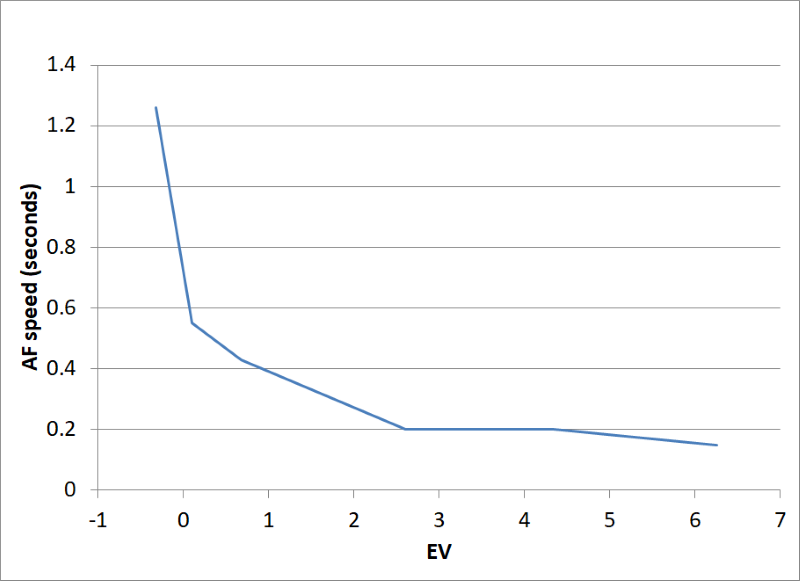
When light levels are medium to high, autofocus is virtually instant. The delay between the shutter press and AF lick is hard to measure. Even at lower light levels, results remain very good, with about half a second needed to lock focus. Only in very low light does the system take a significant time to focus. The good news is that the lens does not struggle: focus is still accurate, just slower.
AF Tracking
AF tracking, or continuous AF, is a hallmark of Sony cameras. As such, it is important to evaluate whether or not the FE 28-60mm can keep up with fast movements of the subject.
In our experience, the lens performs admirably in this regard. Once focus is locked, the camera keeps up with all subjects movements. We almost never encountered occurrences when the camera would lose its focus lock once achieved. The following animation illustrates an apparently simple scene, but one which involves first vertical movement, then movement towards the camera, followed by a rotation of the viewing angle. All frames in this series turned out sharp and well focused.

General Image Quality
Before diving into the technical aspects of this review, let’s have a look at the more subjective elements which can make or break an image.
Field of View
The FE 28-60mm offers a rather short focal range, with a 2.15x ratio. While 28mm is a common minimum focal length for a full frame walkaround lens, especially for DSLRs, many higher-end options go down to 24mm and, as such, some users will feel that the lens’ widest angle is just not wide enough. To be fair, for more compact and/or entry-level lenses, 28mm is the De Facto value. Only two lenses on the market compare to the Sony 28-60mm while going wider: the Nikon 24-50mm F4-F6.3, a lens that looks conspicuously like the Sony while being shorter, slower and slightly bigger, and the Panasonic 20-60mm F3.5-F5.6, a lens twice as big and twice as heavy.

In other words, the Sony offers a conservative range, accepting the compromises necessary to keep the size and weight down to a minimum.
28-60mm still offers a comfortable and versatile range. At the wider end, the lens can serve for landscapes. The range covers the “normal” field off view and goes slightly beyond, at 60mm. Again, users expecting a one-stop-shop will be disappointed, as this lens falls short of what is generally considered the tele range. With some cropping, 60mm can still serve in many situations.

Color and Contrast
The FE 28-60mm generally delivers pleasing colours, with nice saturation and fine gradation between light and shadows. Results will of course depend on the color profile but in general, tones are slightly subdued and react well to enhancements in post-processing.
Starbursts
starbursts, sometimes called sunstars, are a pleasant surprise of the FE 28-60mm.
At the wider apertures, starbursts are mostly absent, but using smaller values generate well-defined starbursts, with rays tapering beautifully as they extend away from the center point.
Sharpness
Sharpness, or a lens’s ability to resolve small details, is far from the only important characteristic of a lens, but it is probably the one which many users look at first. Soft images distract the viewer and the sharpest point in an image draws the eye of the viewer.
There are several ways to measure resolution. Some are quantitative, such as the number of lines per millimeter that can be resolved, while others are comparative, such as using a standardized scene to pit lenses against one another. We will use the latter, and supplement it with real-life samples.
To evaluate sharpness, we use a standard test chart that can be used to compare lenses to one another. We place the camera and lenses at a distance of 100x the focal length, so that the chart occupies the same area on all test images. The chart is positioned successively in the center, on the edge and corner off the frame, testing all apertures each time. Focus is repeated for each position to avoid field curvature contributions.
This test will not show how good a lens can be. Quite the contrary, it is a stress test to illustrate the limits of a lens’s capabilities.
Resolution is of course sensor-relevant. For this test we use the A7C camera, since the lens was released with it. Sony’s top of the line sensors will put more challenge on the lens, but most users are likely to use Sony’s proven 24MP sensor with this lens.
Test results at 28mm
The following images illustrate the results at all apertures at 28mm.
| Center | Edge | Corner | |
| F4 |  | 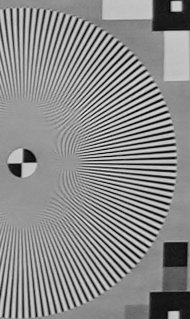 | 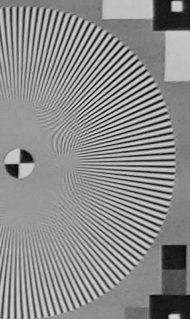 |
| F5.6 | 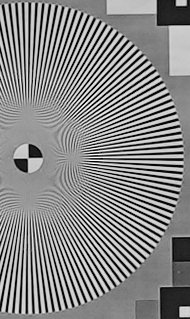 |  |  |
| F8 | 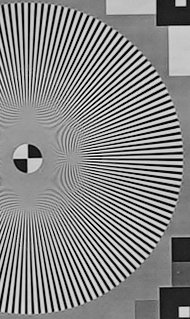 | 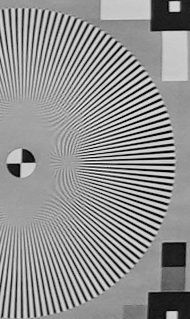 |  |
| F11 | 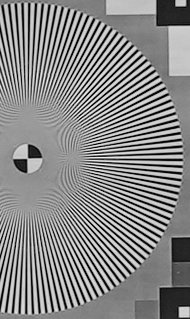 |  |  |
| F16 | 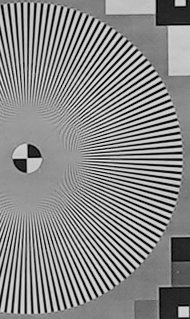 | 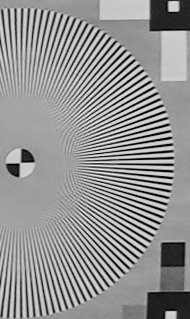 | 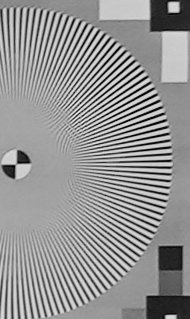 |
| F22 | 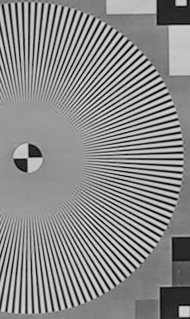 |  |  |
Center sharpness is already excellent wide open, and only improves marginally at smaller apertures. F16 is still perfectly good and F22, while showing a decrease in resolution, remains usable without worry.
Edges are not as sharp, as can be seen both from the converging lines and from the square shapes in the corners of the test images. At F5.6 and up to F11, the difference relative to the center is minimal and should have little impact in most situations.
Corners offer yet again a little less resolution than edges. Best results are obtained at F8 and F11. Again, at medium apertures the gap between the center and the corners isn’t large; the FE 28-60mm produces good results across the whole field of view.
Test results at 60mm
The following images illustrate the results at all apertures at 60mm.
| Center | Edge | Corner | |
| F5.6 |  |  |  |
| F8 | 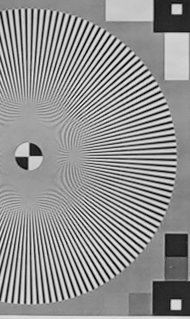 | 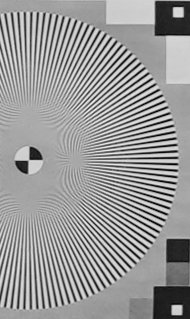 |  |
| F11 | 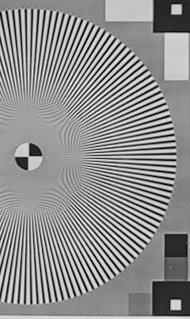 |  |  |
| F16 | 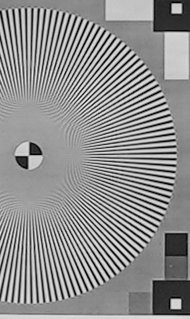 |  |  |
| F22 | 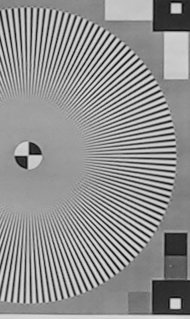 |  | 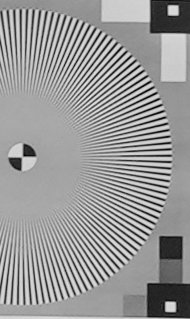 |
| F32 | 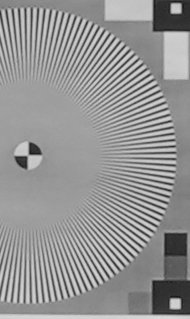 |  |  |
Center sharpness at 60mm and F5.6 is good, but not as high as it is for 28mm F4. At the longest focal length, F8 and F11 offer the best center resolution. F22 shows an important decrease in sharpness, and F32 is very soft. We wonder why Sony bothered with offering that small aperture value on the lens.
The good news is that, at 60mm, edges and corners are almost as well resolved as the center, for all aperture values. Subjects can reliably be placed anywhere in the frame.
Summary
Sharpness results with the FE 28-60mm show one of the reasons why Sony played it safe regarding the focal and aperture ranges. The lens performs very well at most apertures and focal lengths, and can be used with confidence at any aperture value except the smaller ones. For a compact lens meant to be carried everywhere, these results are ideal as they mean the user won’t have to worry about the limitations of the lens when shooting.
Vignetting
Vignetting, or the darkening of corners at wider apertures, is both a defect and a feature, as it can be used creatively to put emphasis on subjects closer to the center, create a mood or a vintage look. It can also be corrected automatically by modern cameras so is less of a problem than in the past. Still, it is useful to know how a lens performs when those corrections are absent.
The following chart illustrates the vignetting of the lens, both at 28mm and 60mm, for full frame and the APS-C crop.
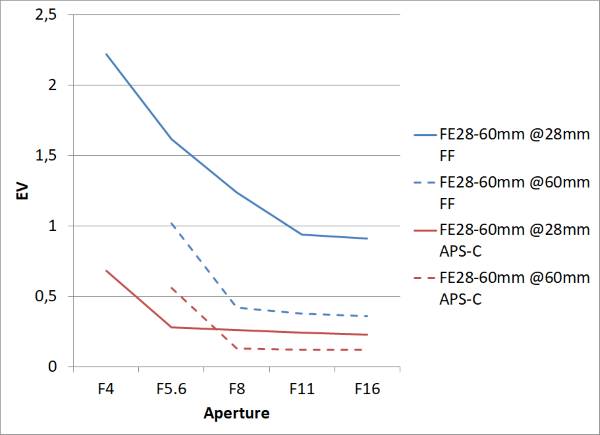
First, the good news. at 60mm, vignetting is present wide open, but easy to correct and will be hard to notice except with uniform scenes such as skies. Also, with the APS-C crop, vignetting is not field-relevant.
On the other hand, at 28mm on full frame, vignetting is extremely high, reaching about 2.25EV at F4. As such, it have a dramatic effect on images if left uncorrected. Even at very small apertures, vignetting is still present.
The images below show the lens’s vignetting at varying apertures.
| Full frame 28mm | Full frame 60mm | APS-C 28mm | APS-C 60mm | |
| F4 |  | NA |  | NA |
| F5.6 |  |  |  |  |
| F8 |  |  |  |  |
| F11 |  |  |  |  |
| F16 |  |  |  |  |
Bokeh
Bokeh is a Japanese term describing the quality of the background blur. It does not relate to the depth of field but to the areas in the image that are beyond the range that is expected to be in focus.
Bokeh is highly subjective. In general, a smooth bokeh with blurred shapes and contours is generally perceived as being of a higher quality. A shallow depth of field does not always equate a more pleasing bokeh.
To evaluate the characteristics of the background blur, we took pictures at varying apertures, using a scene with a lot of detail and bright highlights. The following images show the results.
| F4 |  |
| F5.6 |  |
| F8 |  |
| F11 | 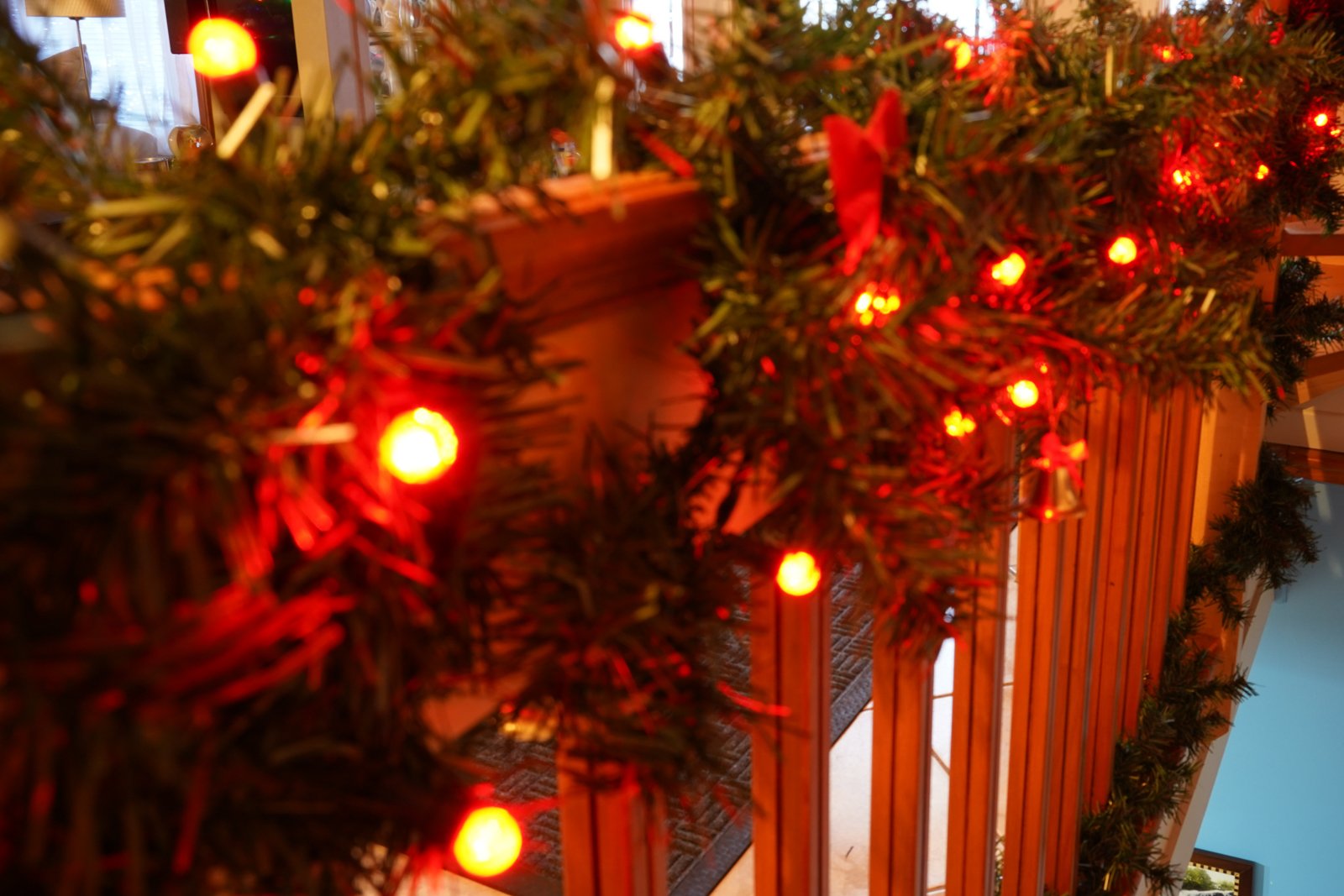 |
| F16 |  |
| F22 | 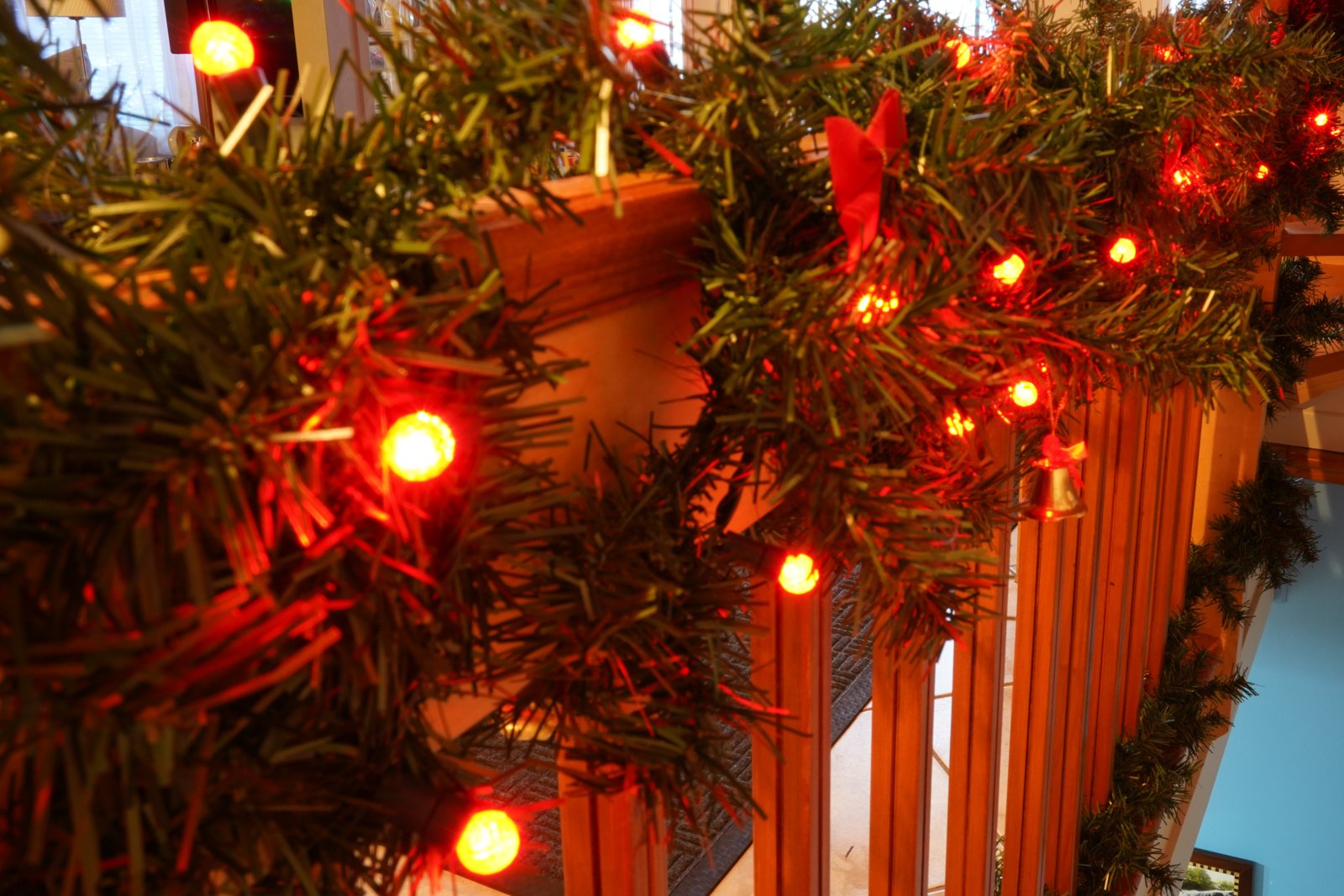 |
Bokeh is adequate, and certainly better than what ought to be expected from a kit lens. The circular aperture blades help the lens deliver highlights with a pleasant, circular shape. Contours are not too harsh, but the limited maximum aperture doesn’t help with subject isolation. In some cases, with busy backgrounds, the lens will struggle to smooth out textures, as can be seen from the images below (full size and crop to emphasize the observation).
In summary, the FE 28-60mm delivers adequate results but is not particularly remarquable for its bokeh rendering. It can serve in a pinch but is not a portrait lens.
Flare and Ghosting
Flare is a decrease in contrast caused by reflections on internal lens elements. Ghosting is the appearance of orb-shaped artifacts in an image containing a light source, caused by the same internal reflections. High-quality coatings reduce the importance of flare and ghosting in an image.
We test flare and ghosting by taking pictures of a bright light source positioned at the center and on an edge of the frame, at varying apertures.
Test results at 28mm
| Center | Corner | |
| F4 | 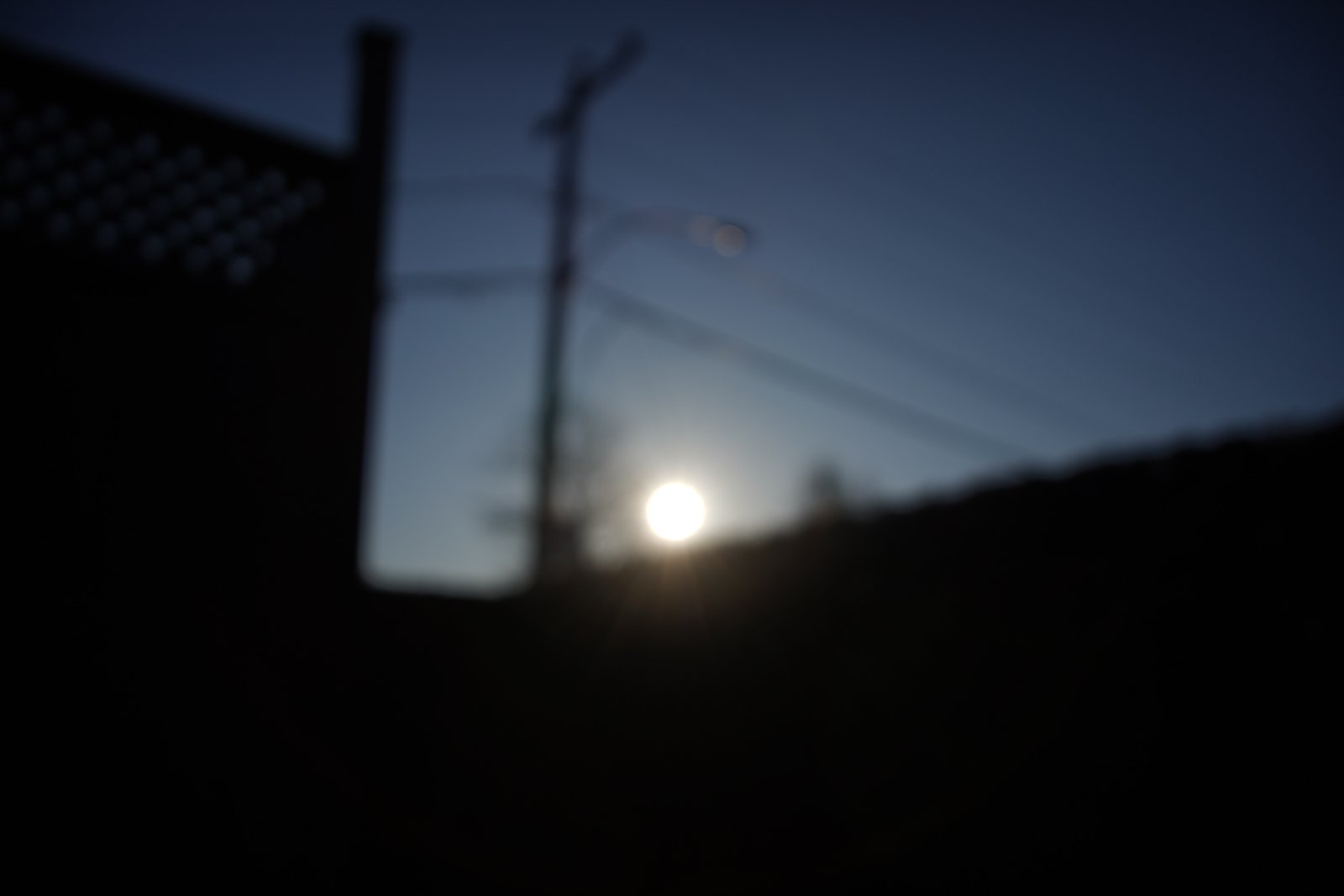 |  |
| F5.6 | 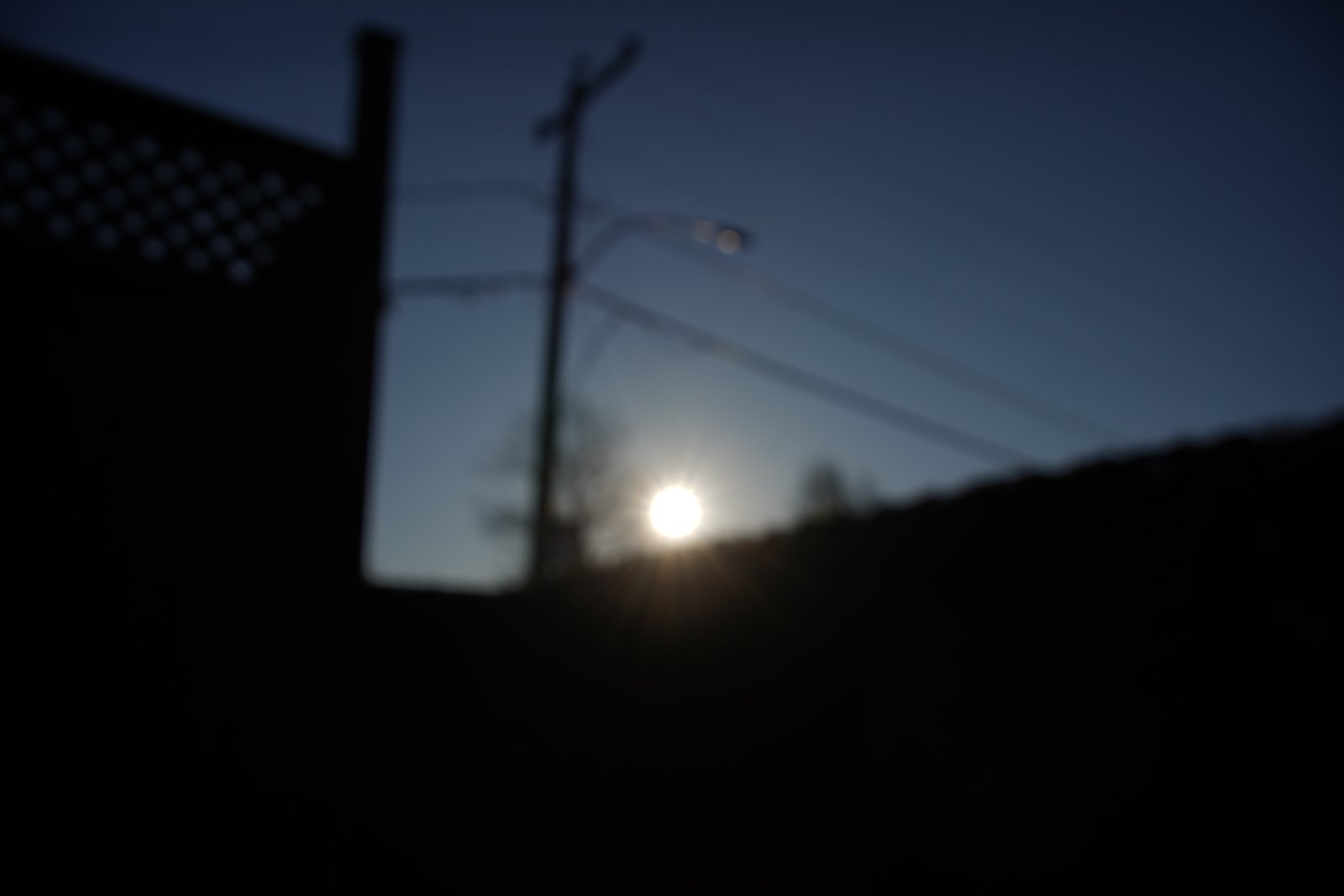 | 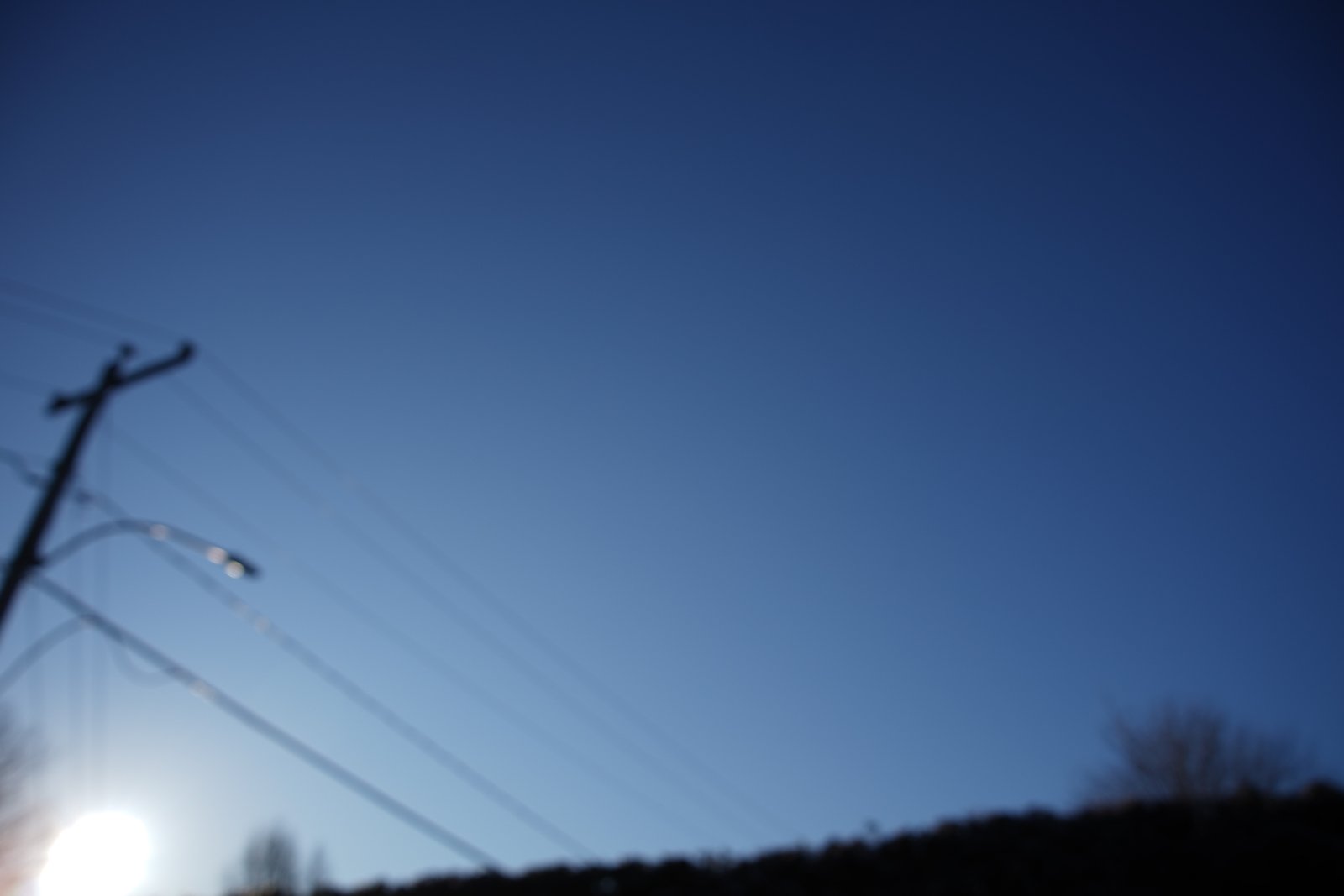 |
| F8 | 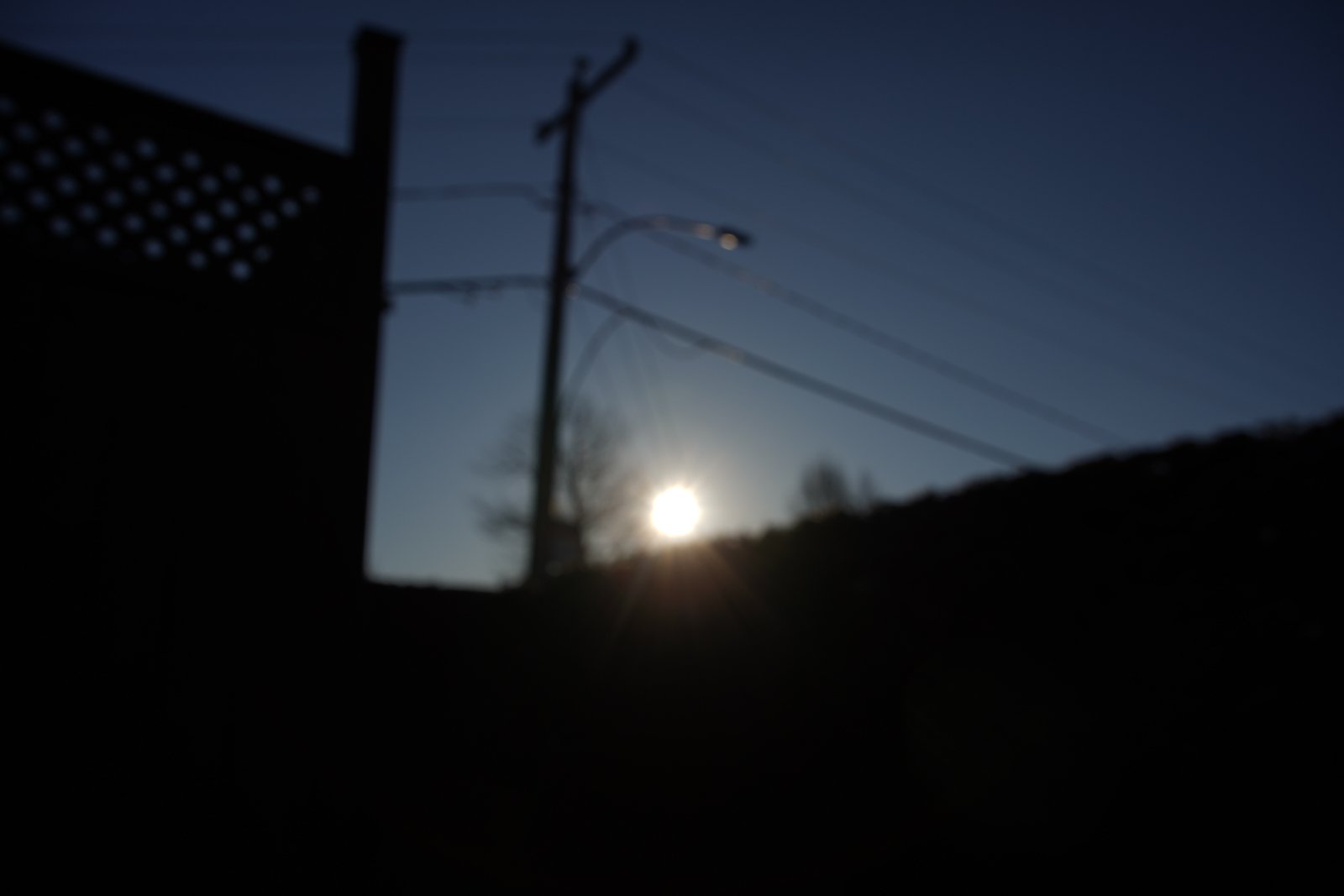 |  |
| F11 | 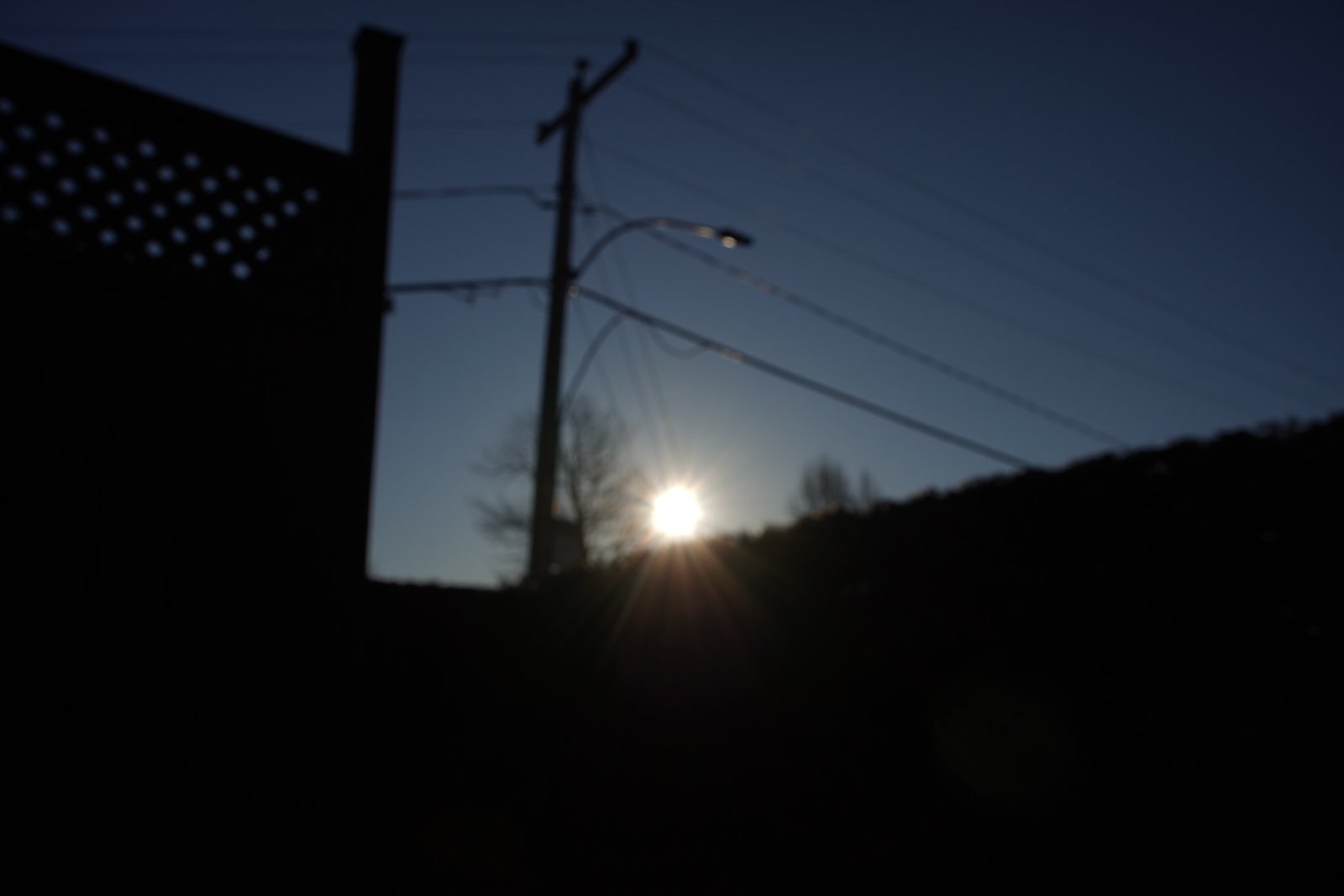 |  |
| F16 | 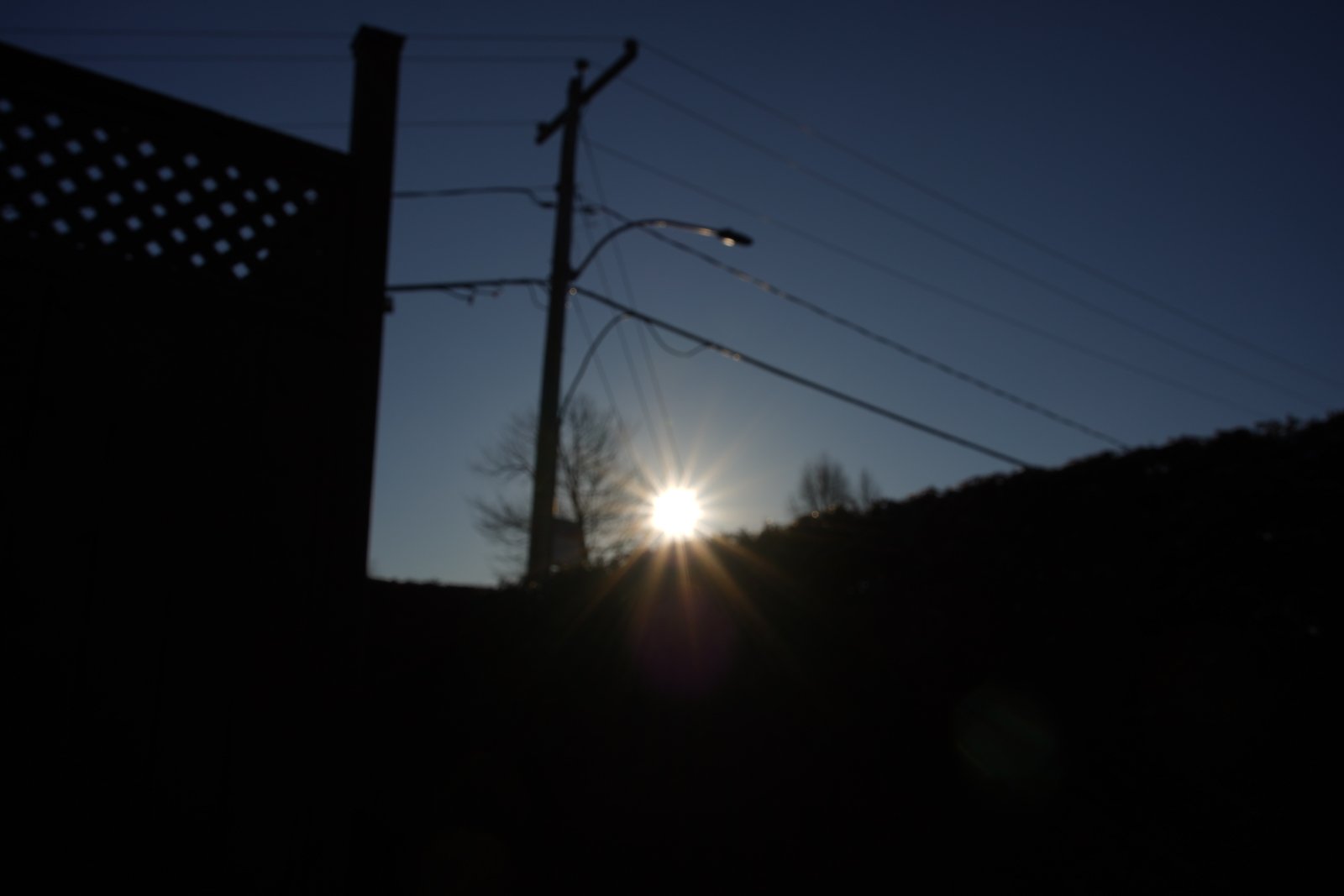 | 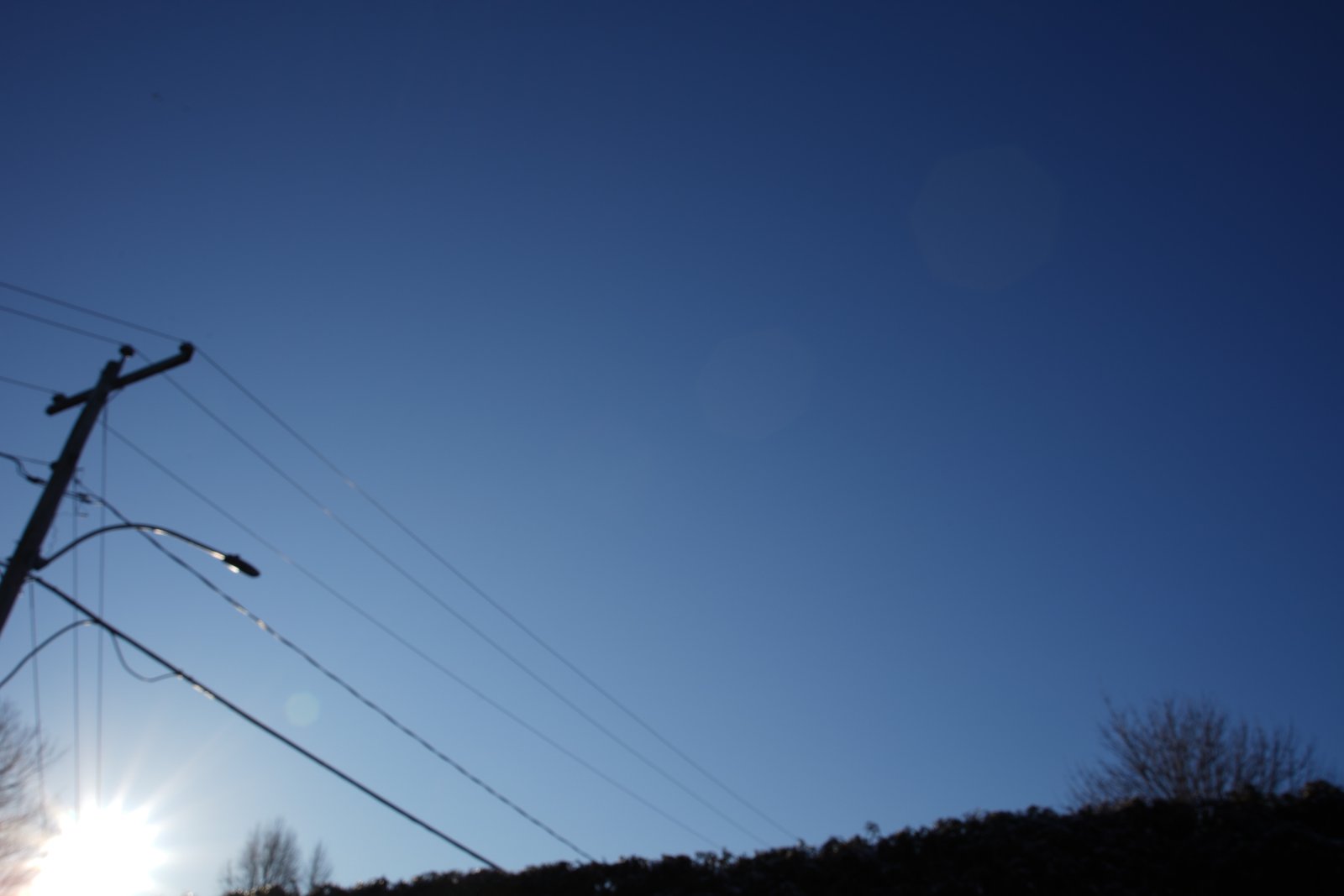 |
| F22 | 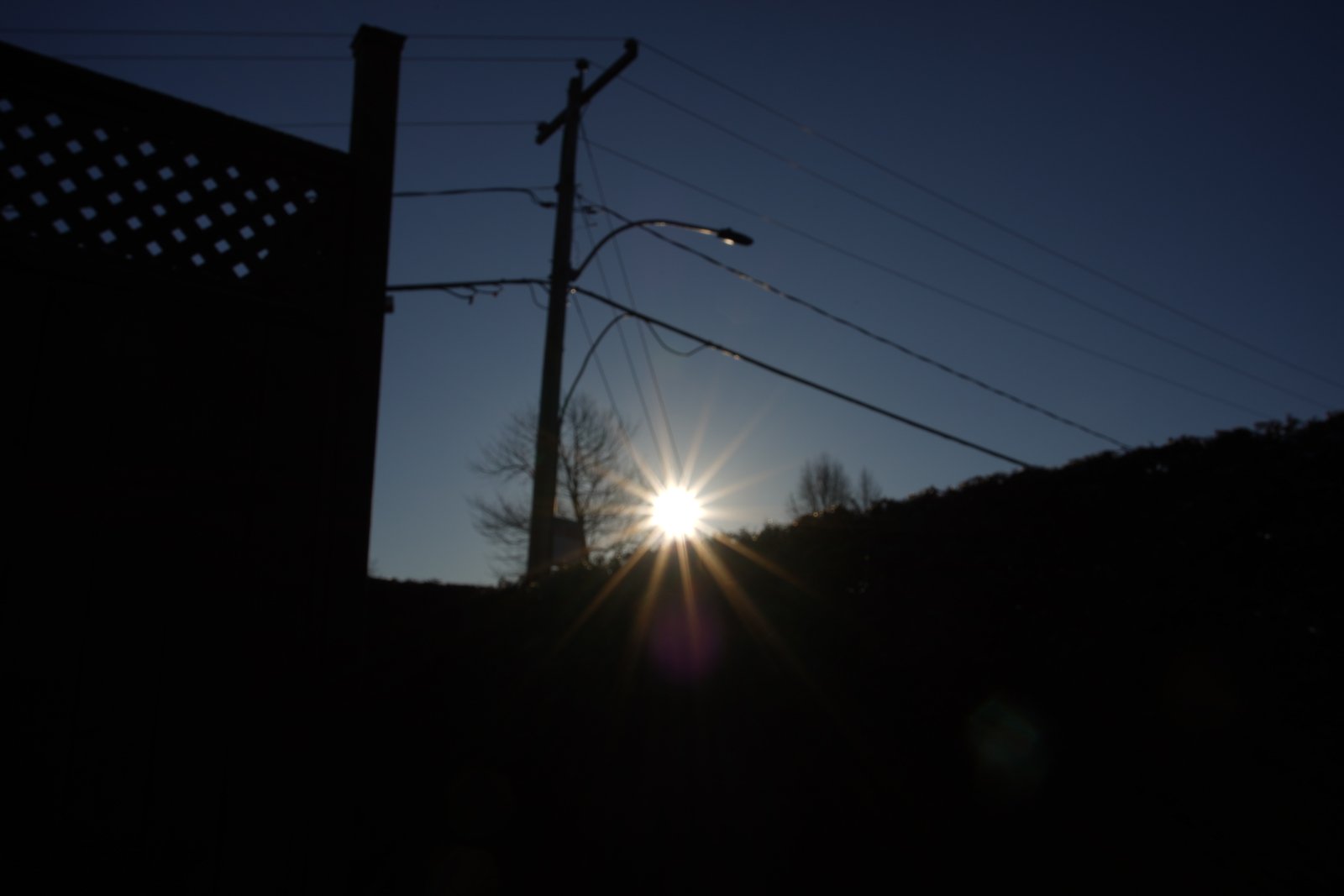 | 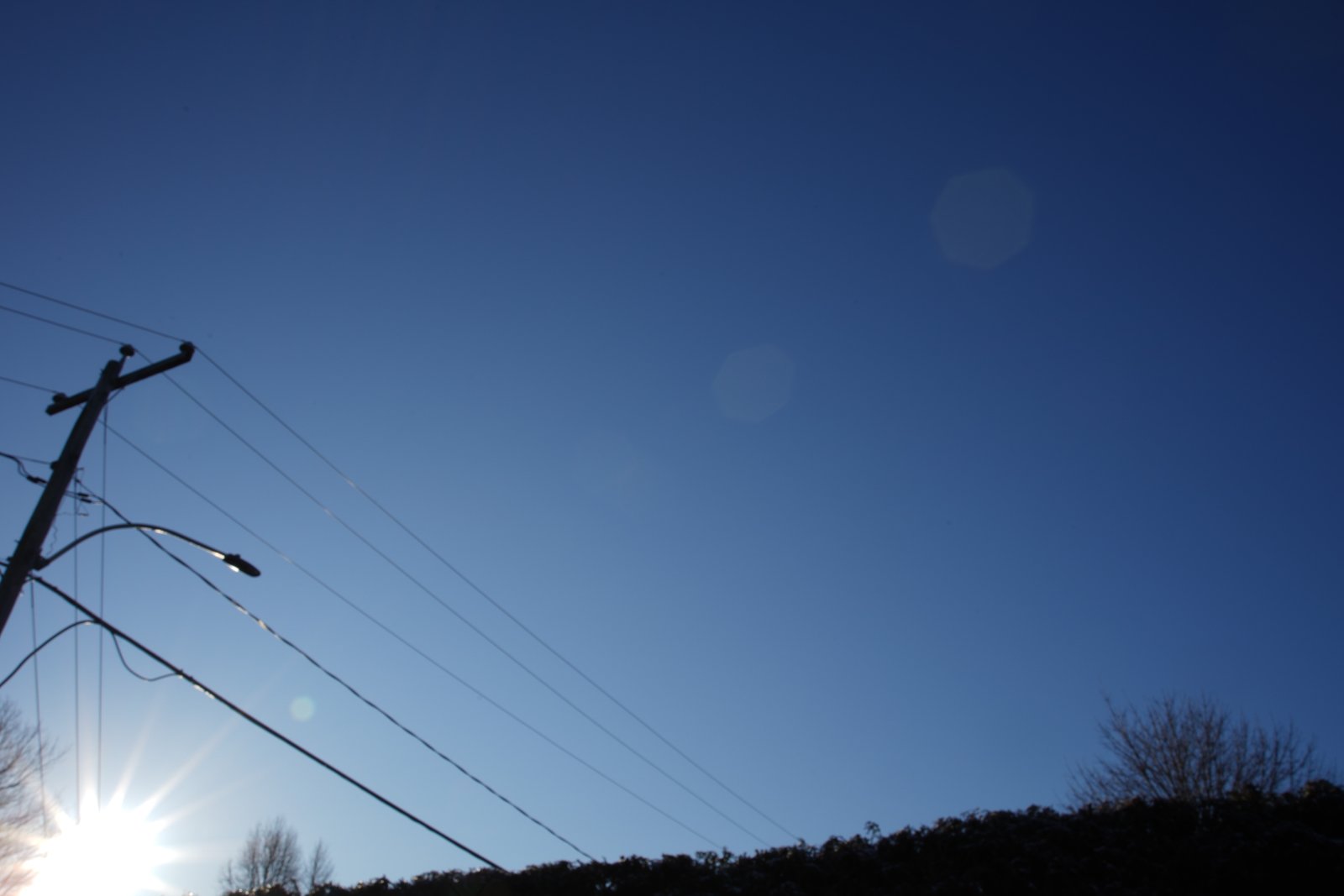 |
In the center, flare is mostly absent at wider apertures. There is a slight diminishing of contrast around the sun, which transforms into a ghost at smaller apertures. This should not be detrimental in most situations.
With the sun in the corner, there is a series of ghosts, easier to see at smaller apertures but almost impossible to see at wider values than F8.
Without being perfect, these results are within expectations.
Test results at 60mm
| Center | Corner | |
| F5.6 | 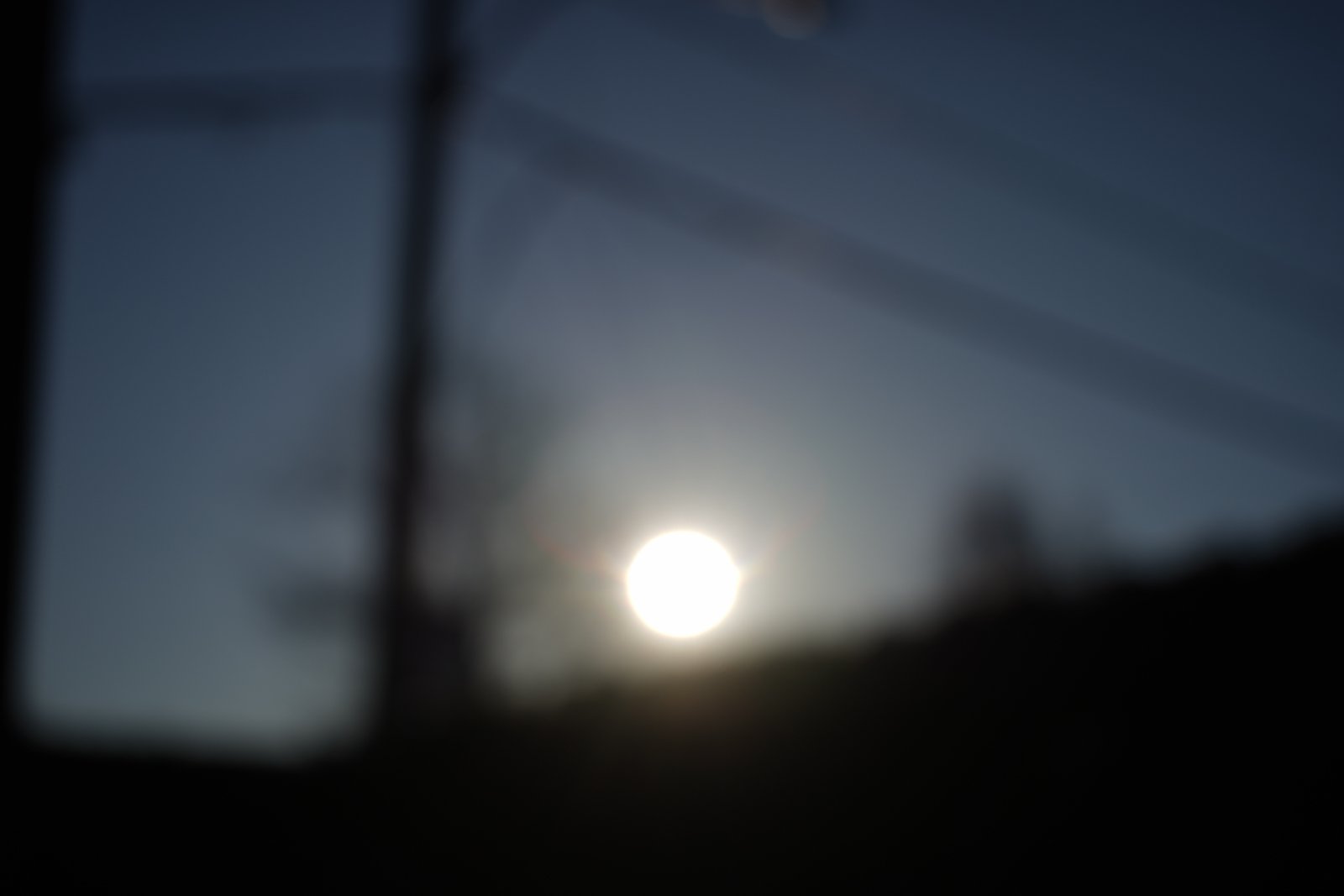 | 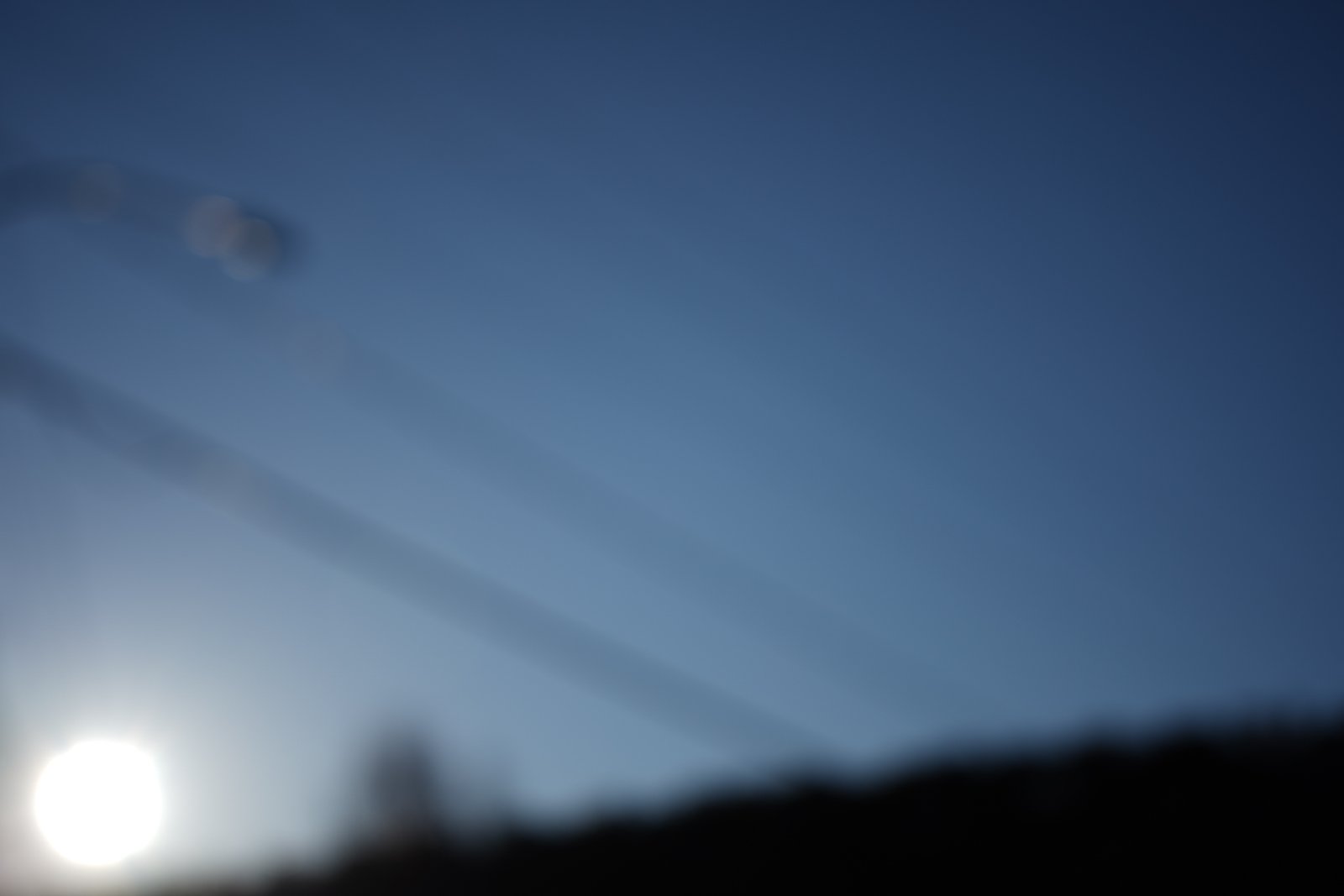 |
| F8 |  |  |
| F11 | 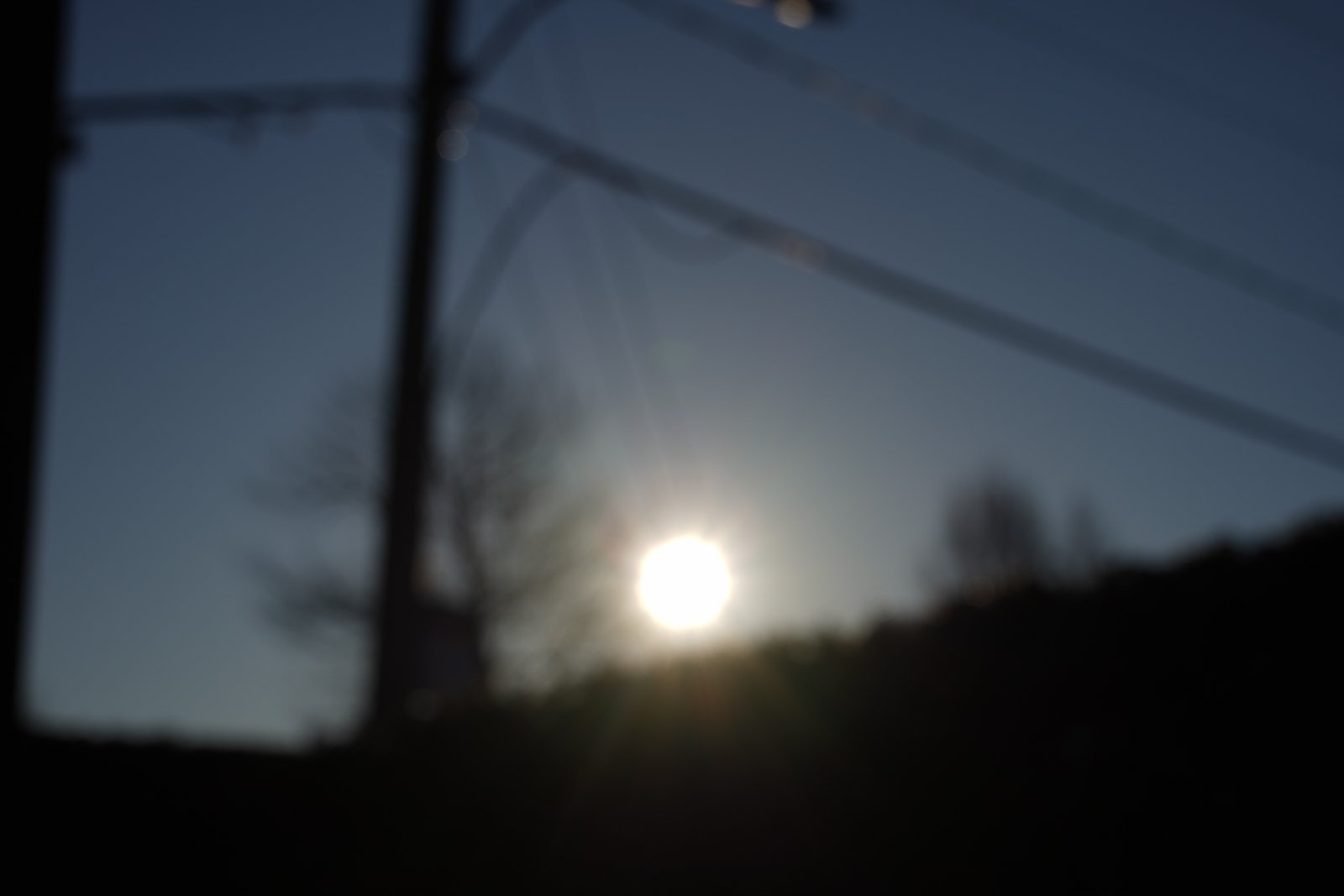 | 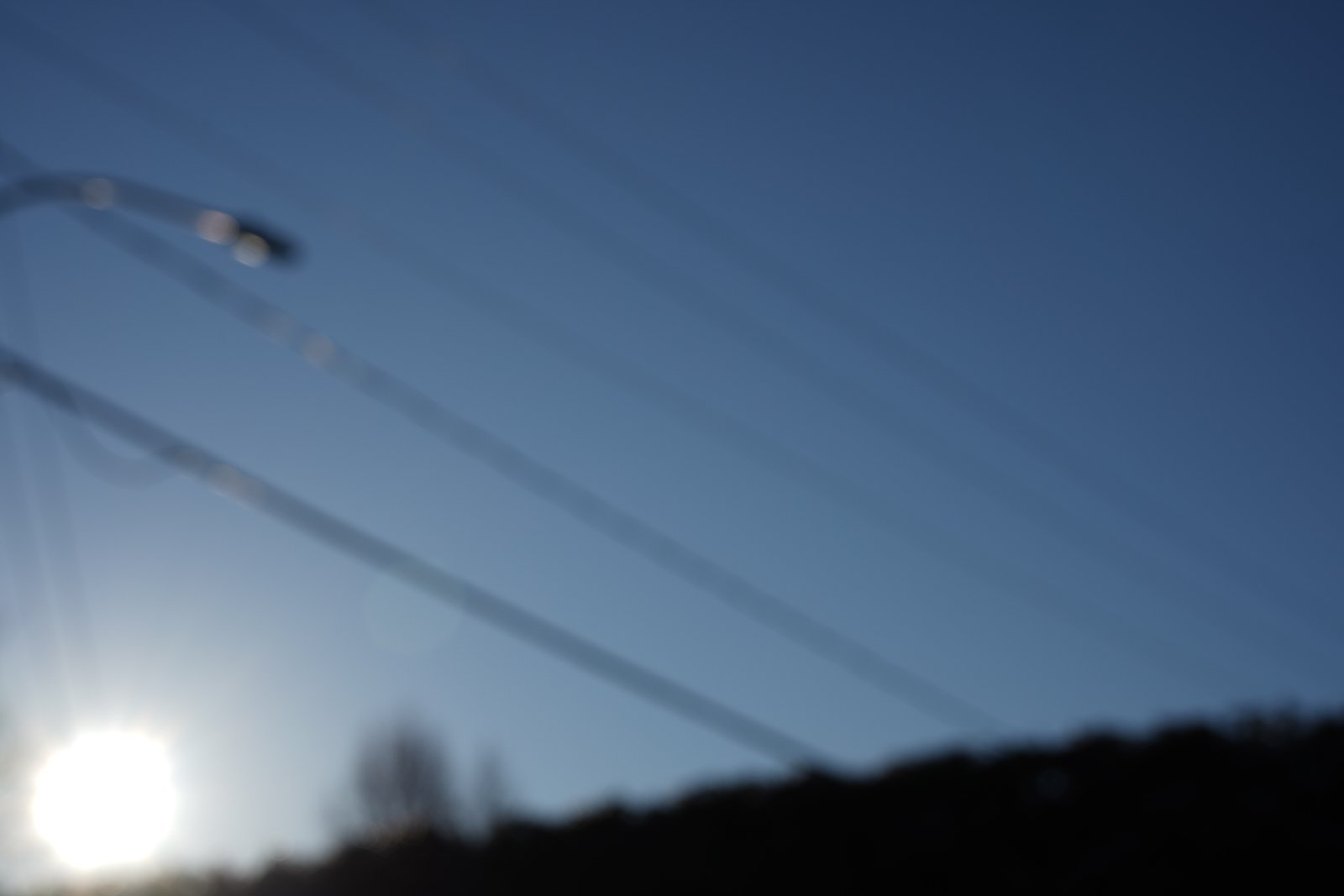 |
| F16 | 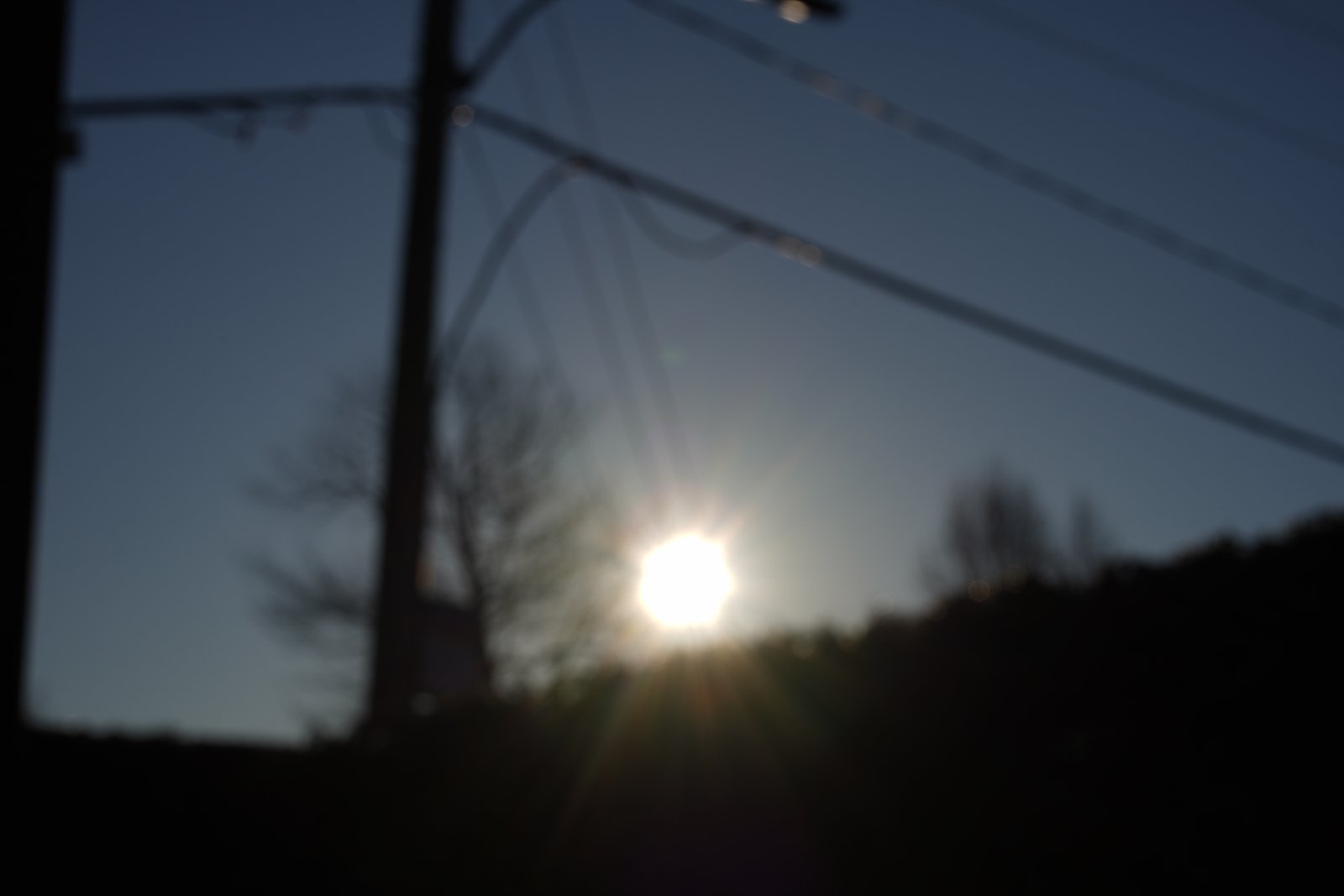 | 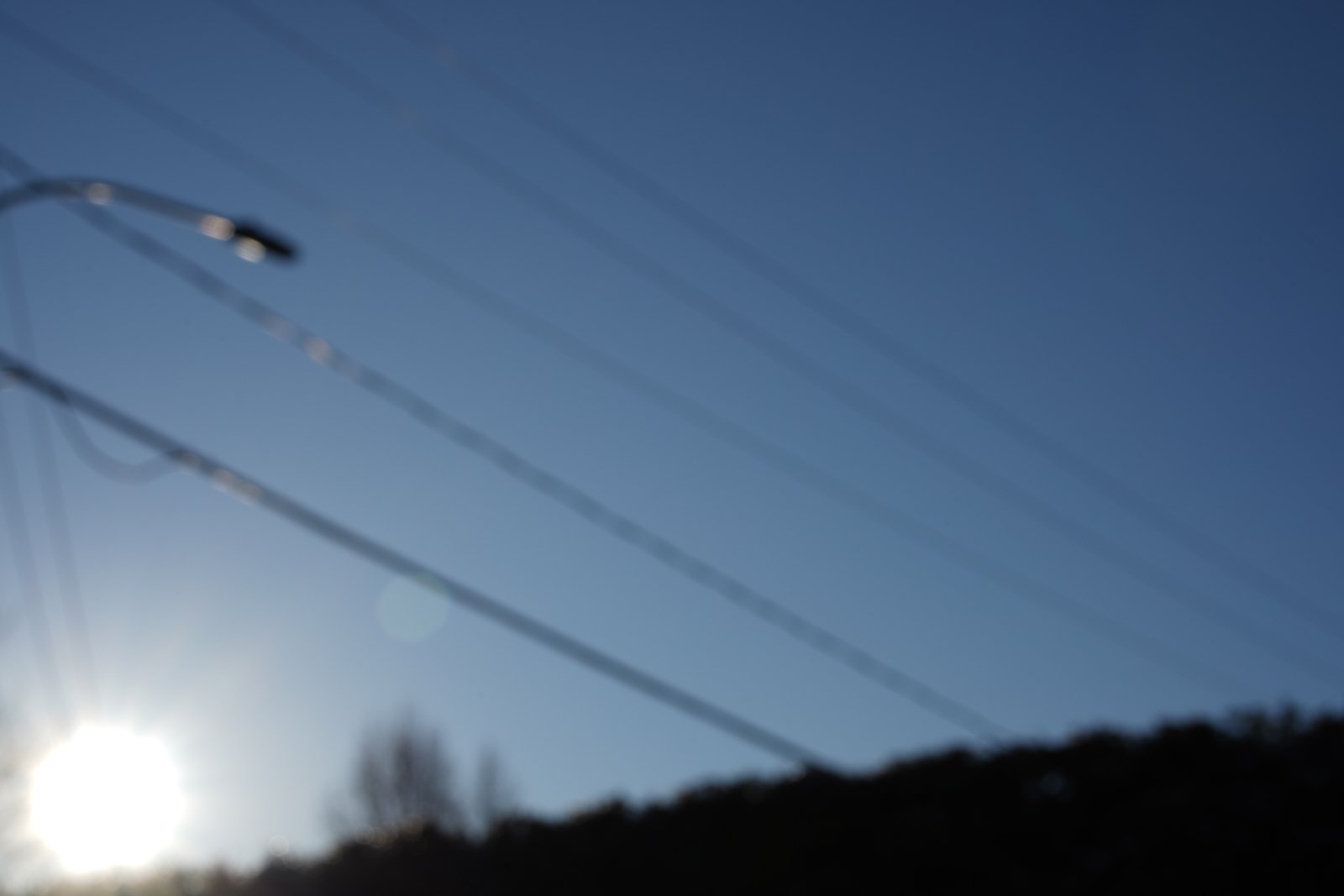 |
| F22 | 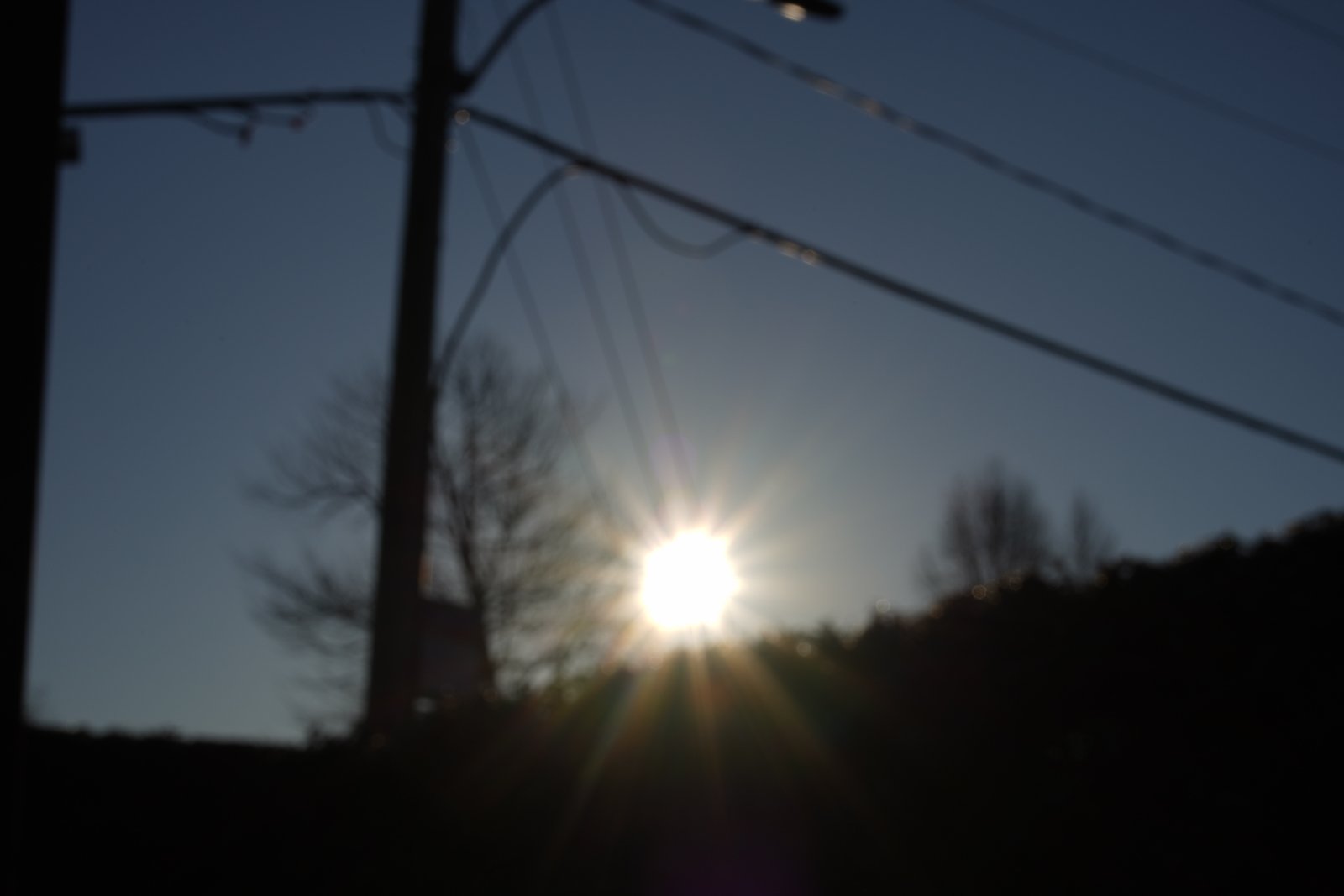 |  |
| F32 | 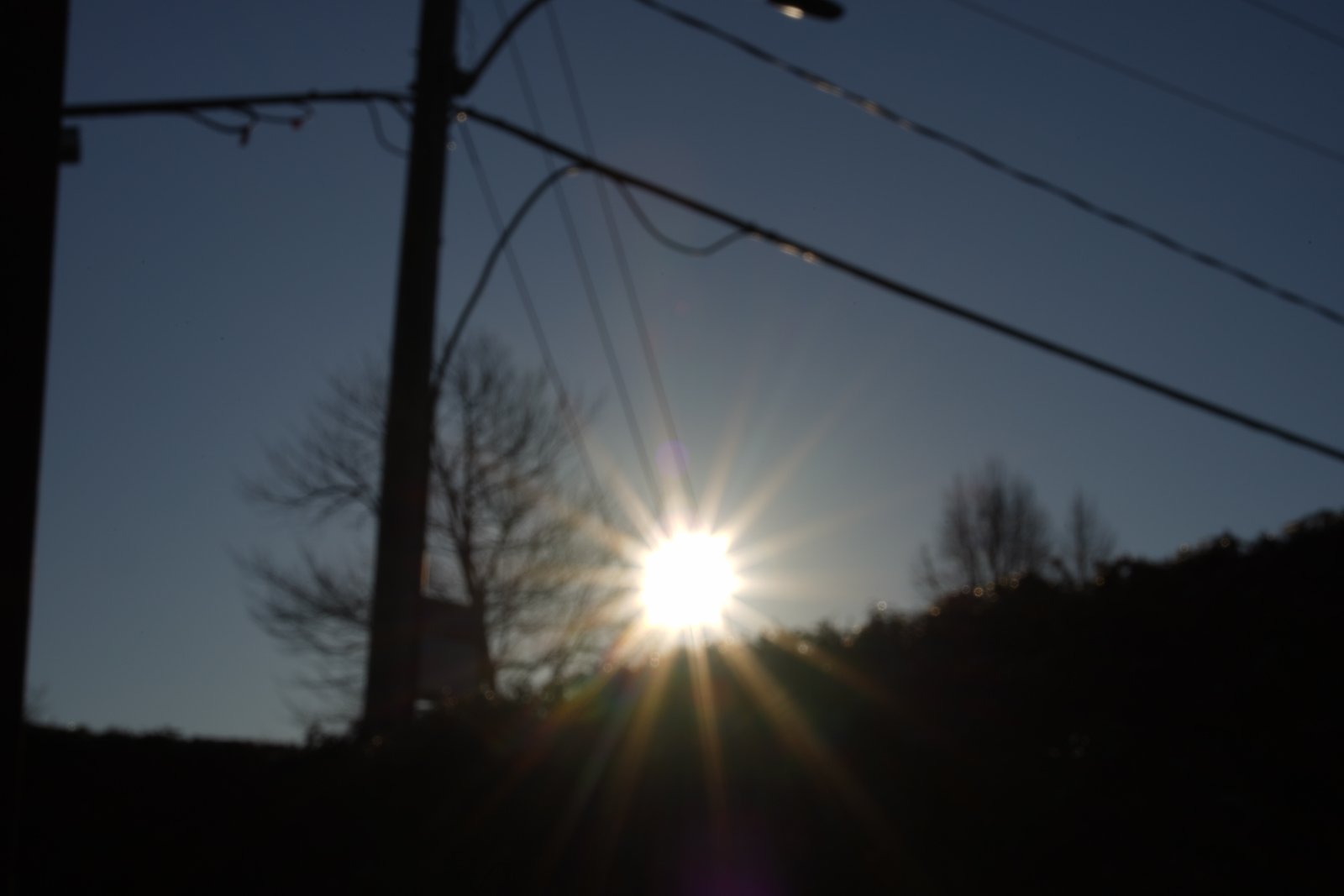 | 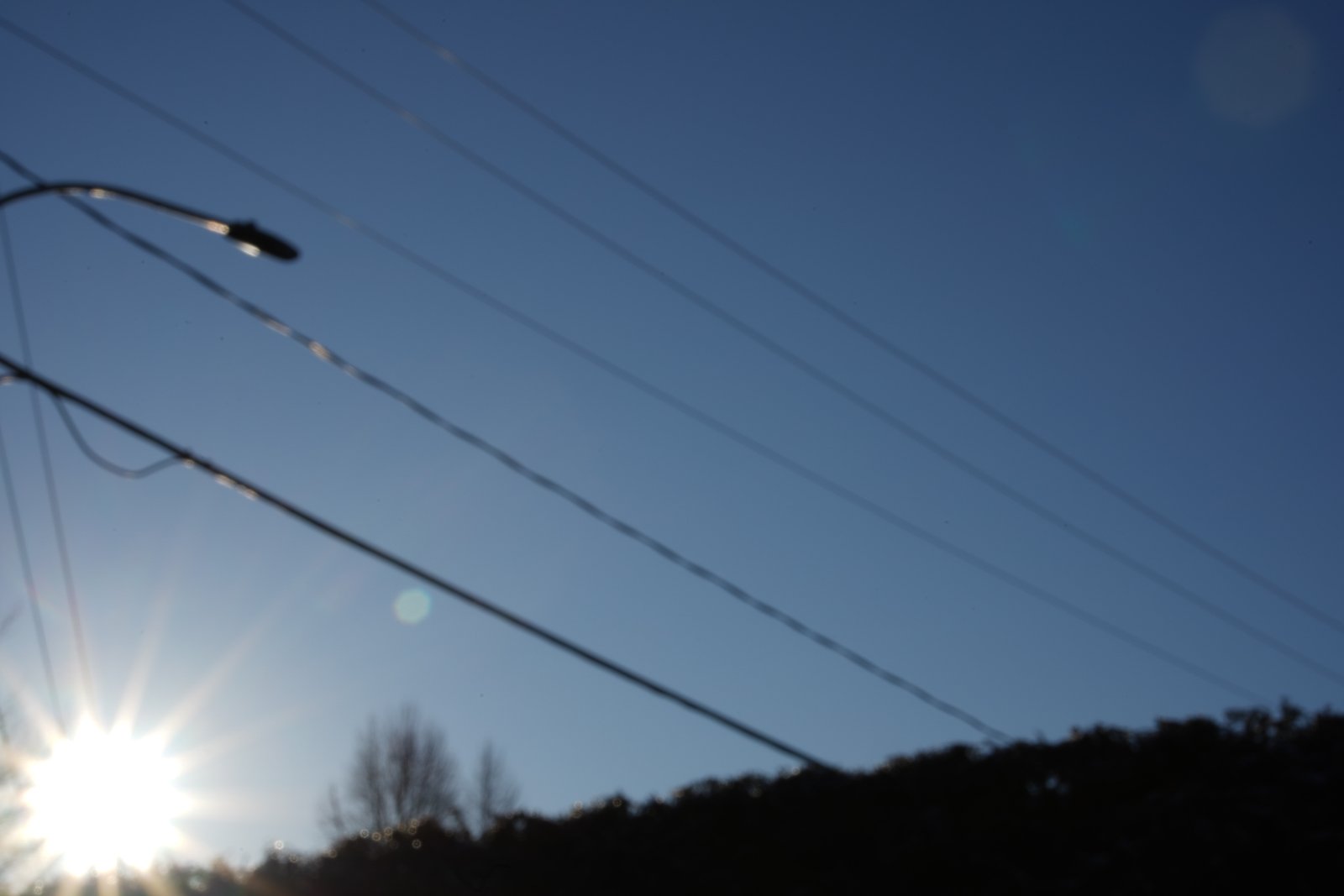 |
The same observations than at 28mm apply. Flare and ghosting are harder to spot at wider apertures, and more present as the aperture closes down.
Chromatic aberration
Chromatic aberration (CA) occurs because different colours do not always have the same focal point. With modern lenses designs, which are better corrected than vintage designs, this is more likely to occur in out-of-focus areas. CA effects are more visible near fast transitions from bright to dark areas.
Most modern cameras have built-in tools to remove CA. Digital manipulations can have an impact on other aspects of an image, thus it is useful to know how a lens performs when those automatic corrections are disabled.
Our test sets up the camera at 45° and focuses on the center of the frame, with targets at the center, top and bottom. Images are captured at varying apertures. We used a focal length close to the middle of the range.
| Top | Center | Bottom | |
| F4.5 | 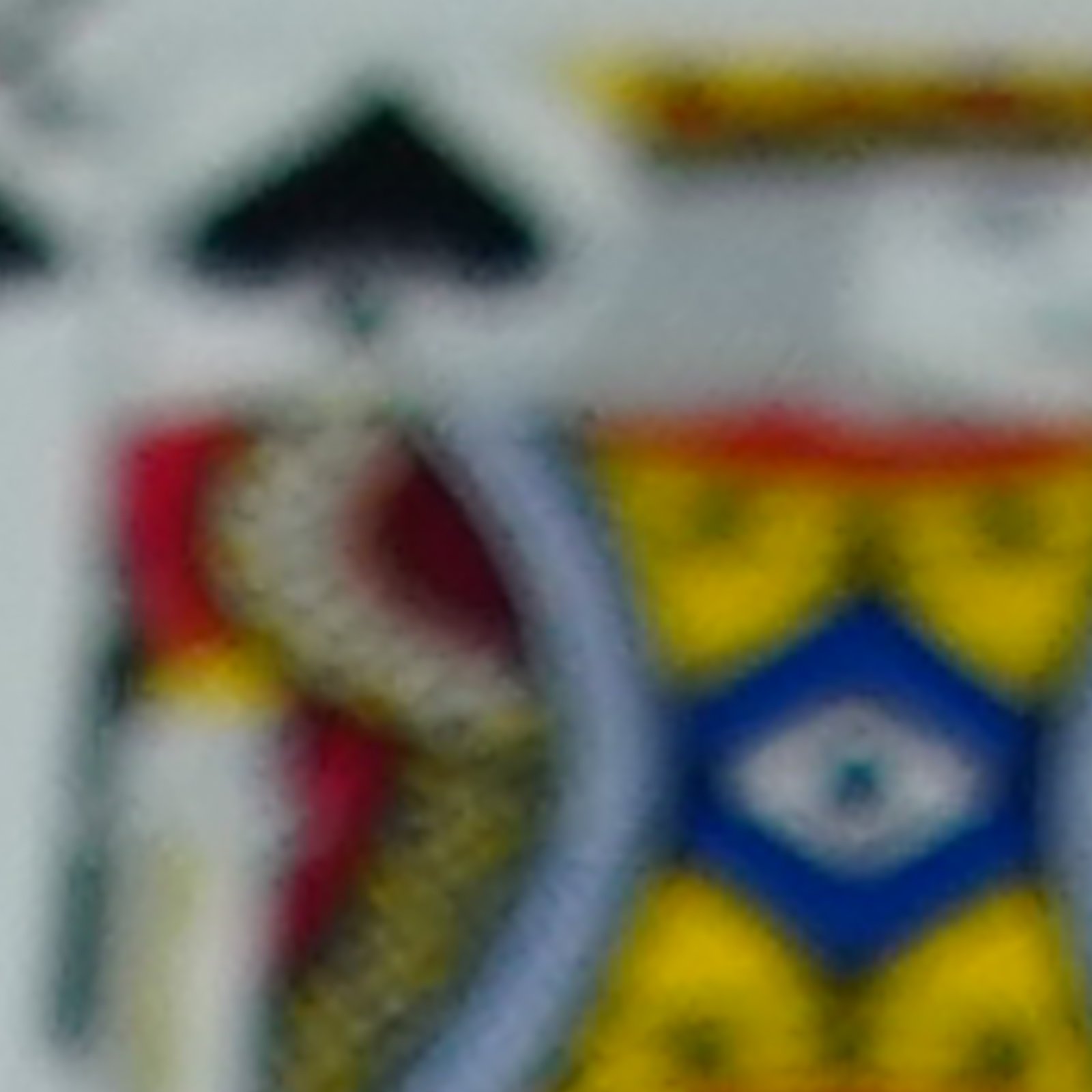 |  | 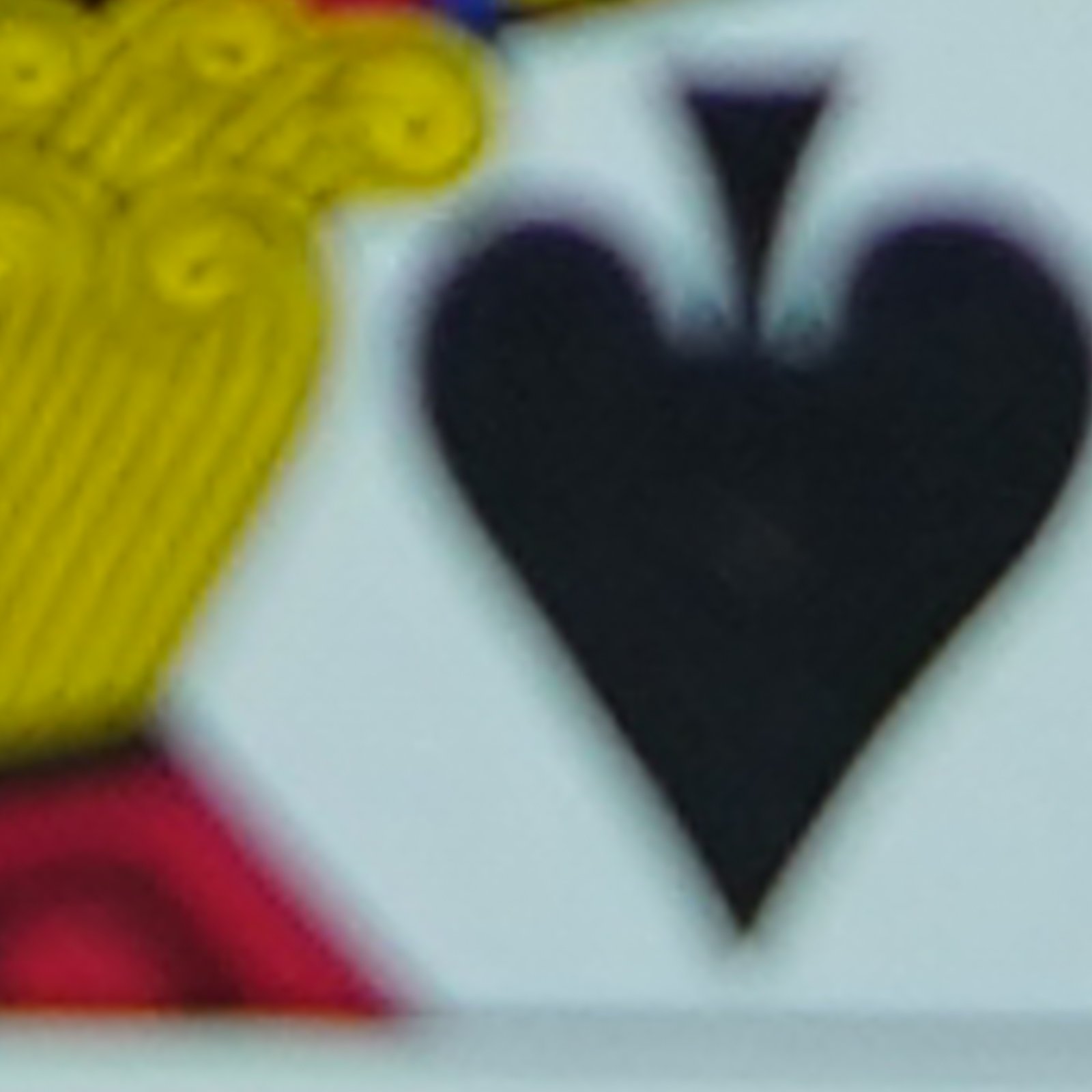 |
| F5.6 | 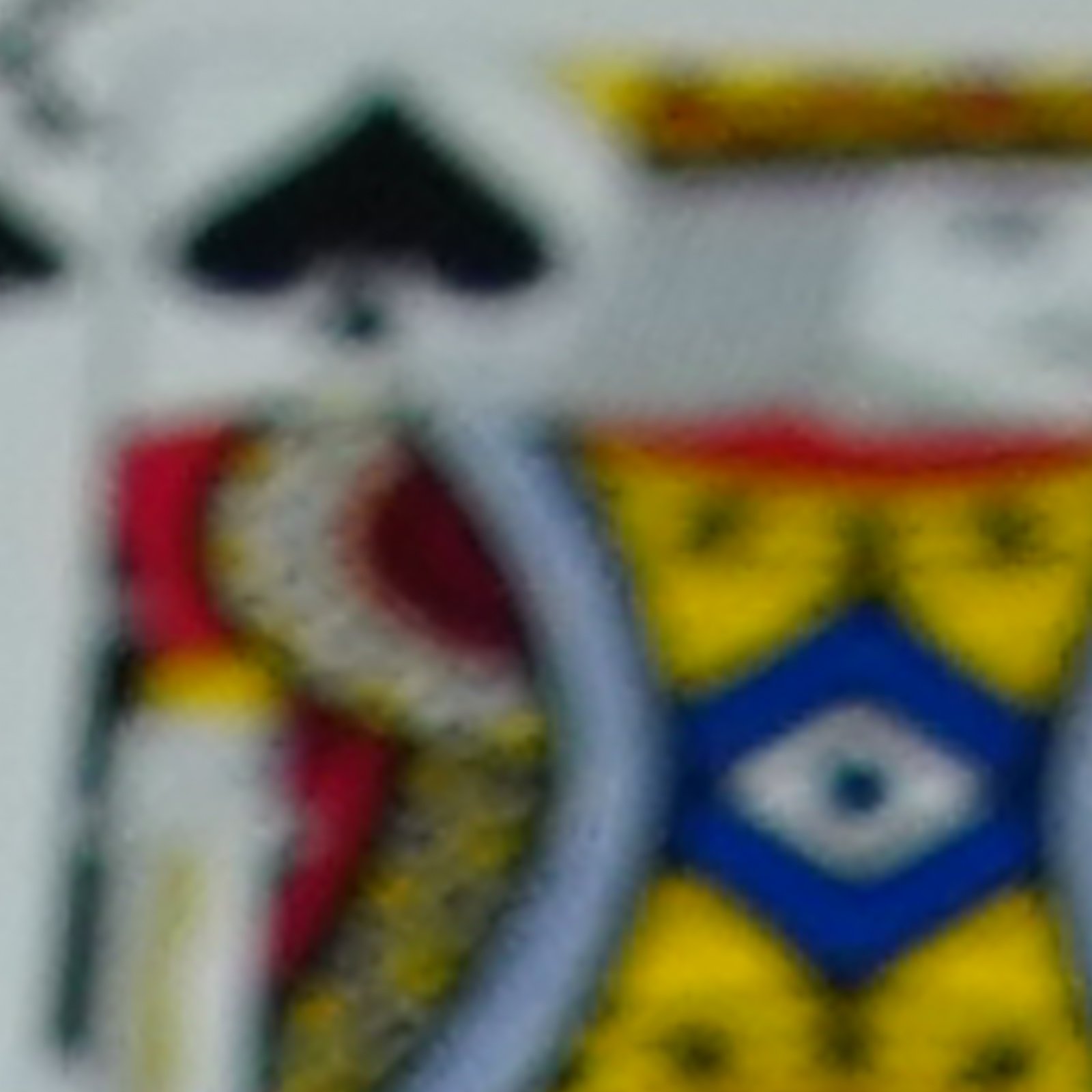 | 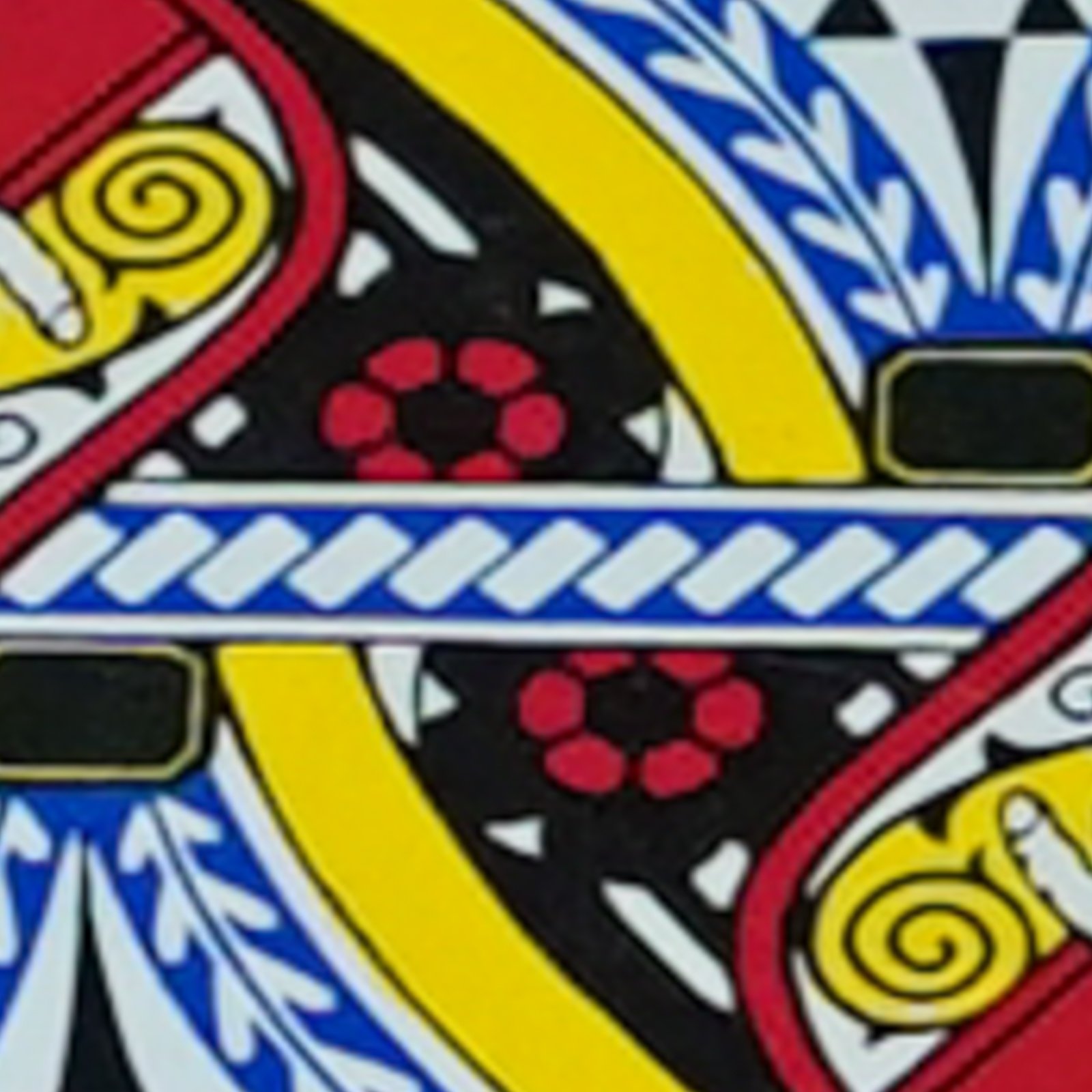 |  |
| F8 | 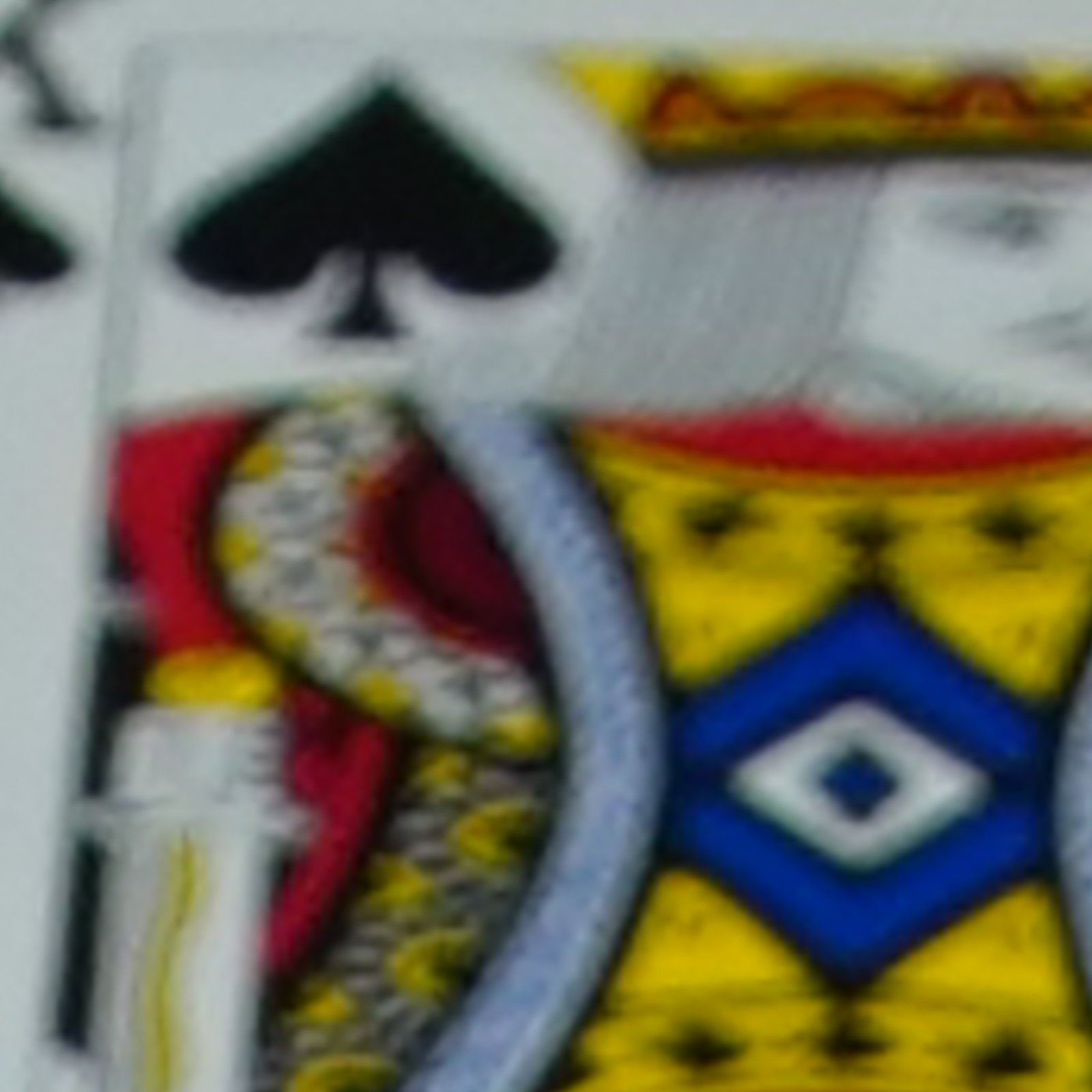 | 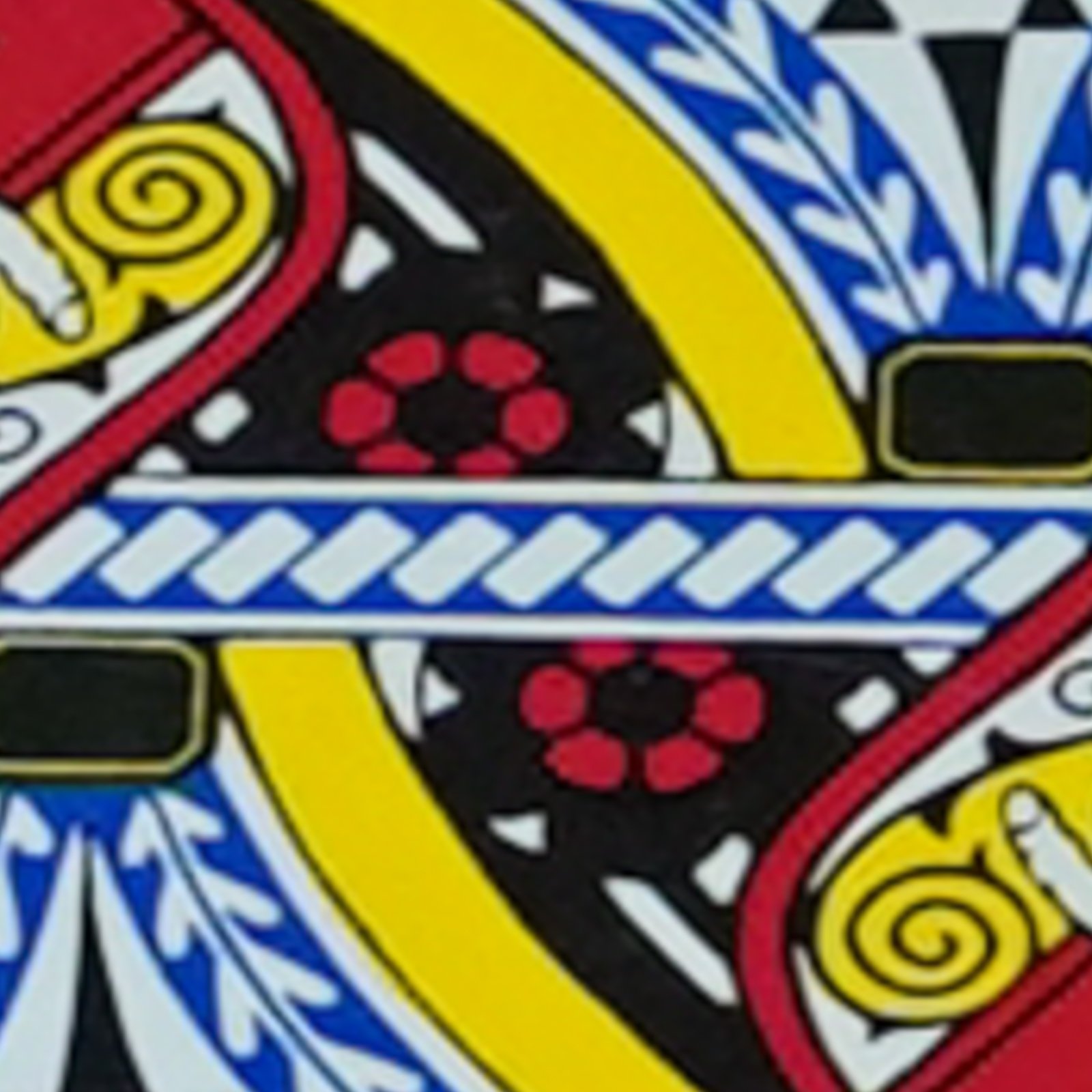 |  |
| F11 |  | 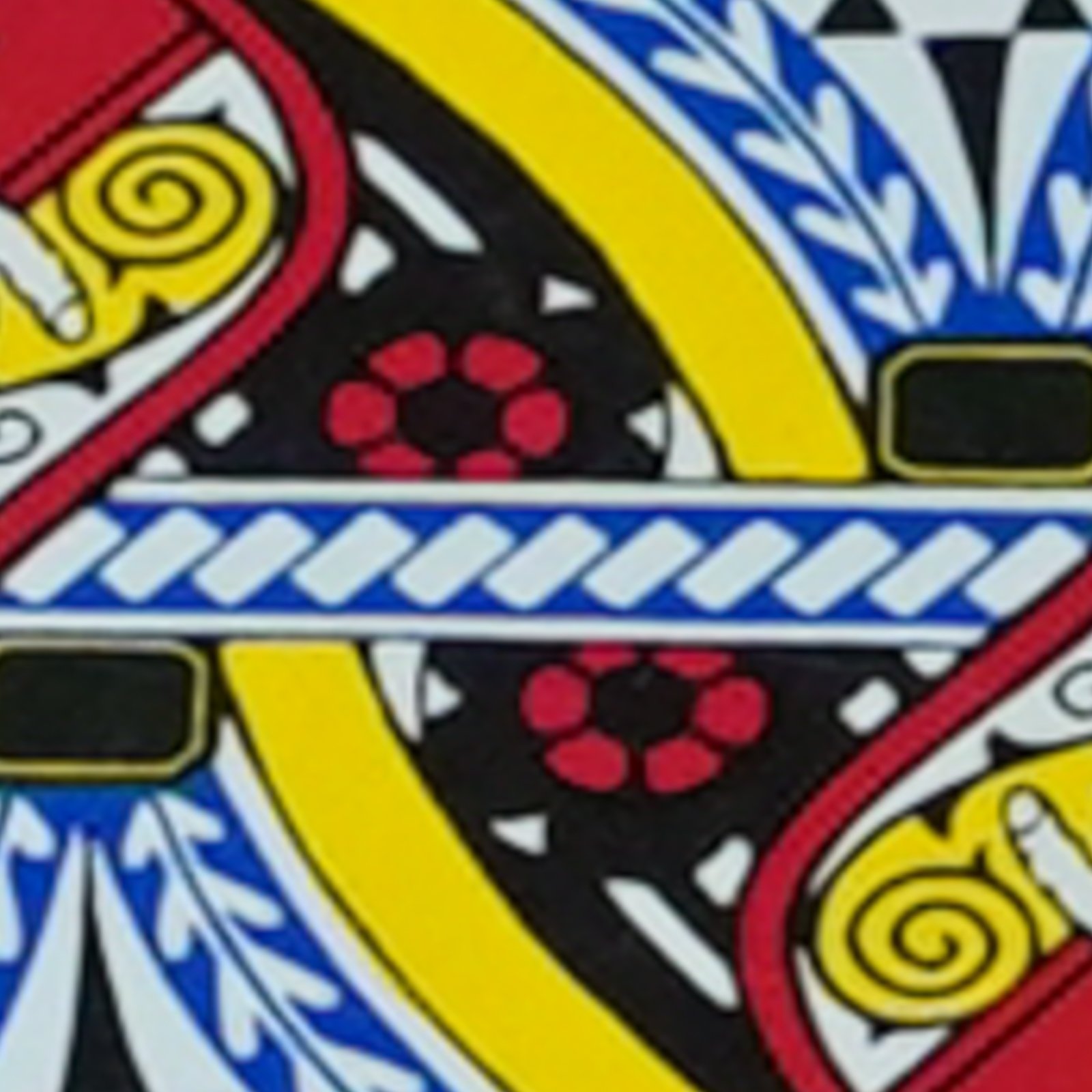 | 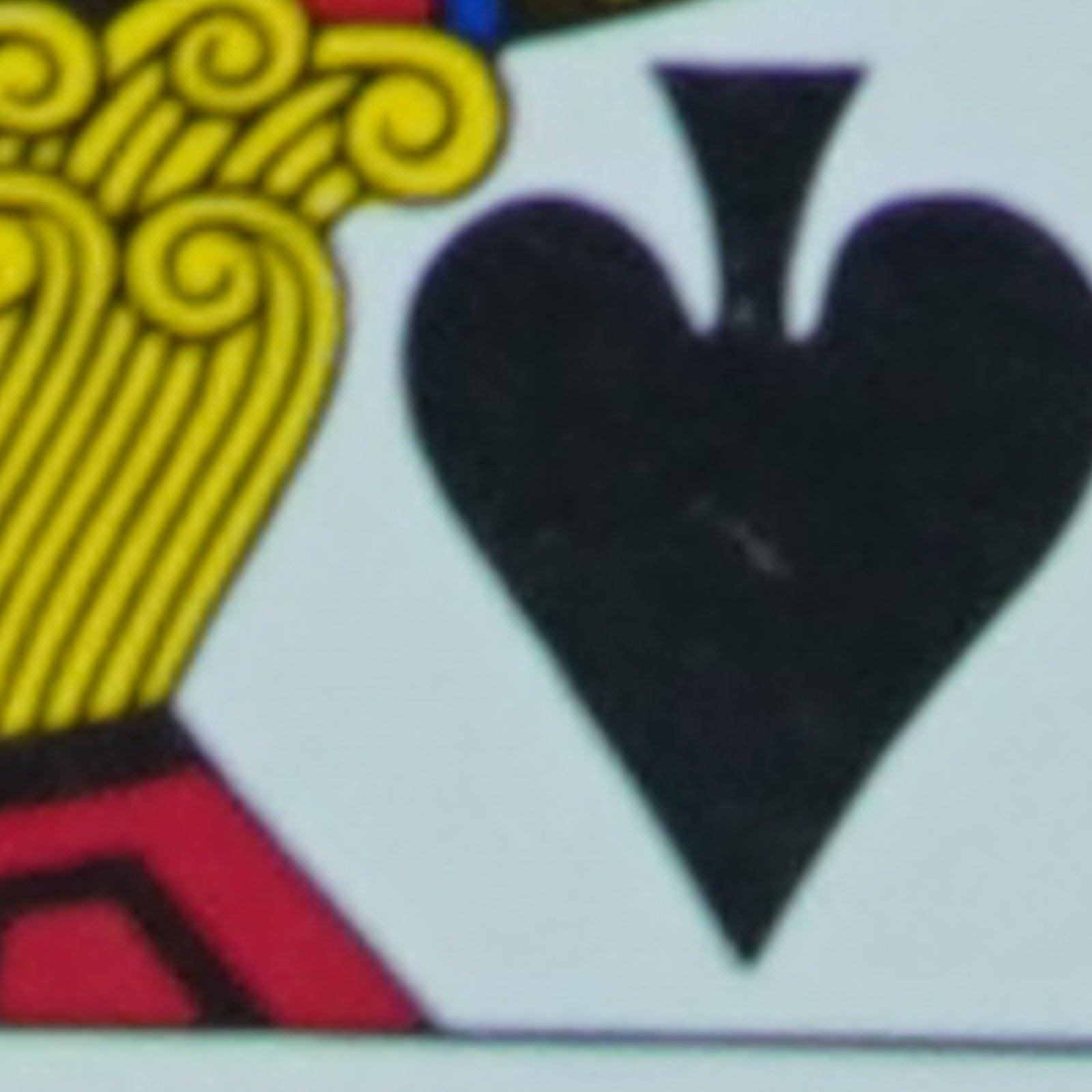 |
| F16 | 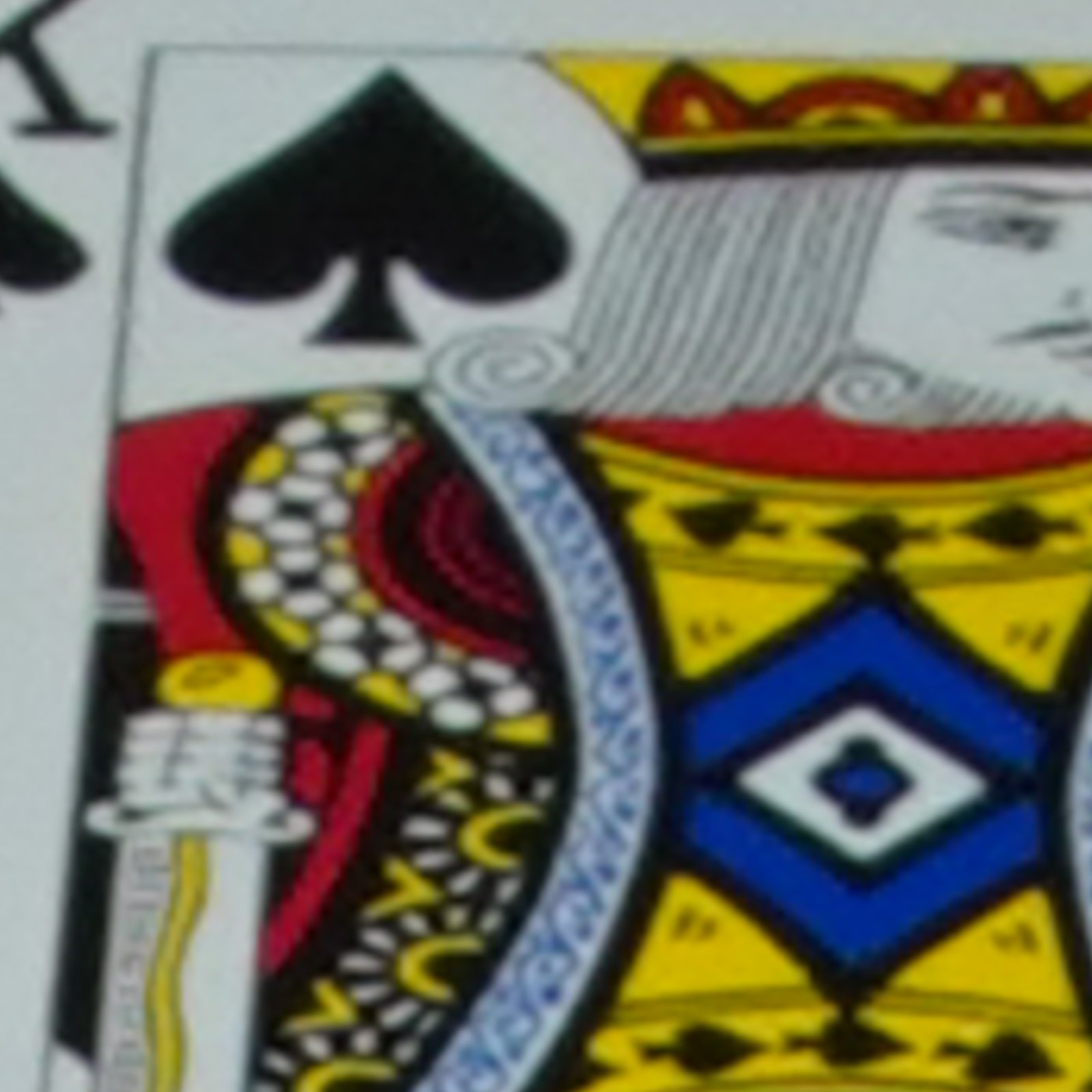 | 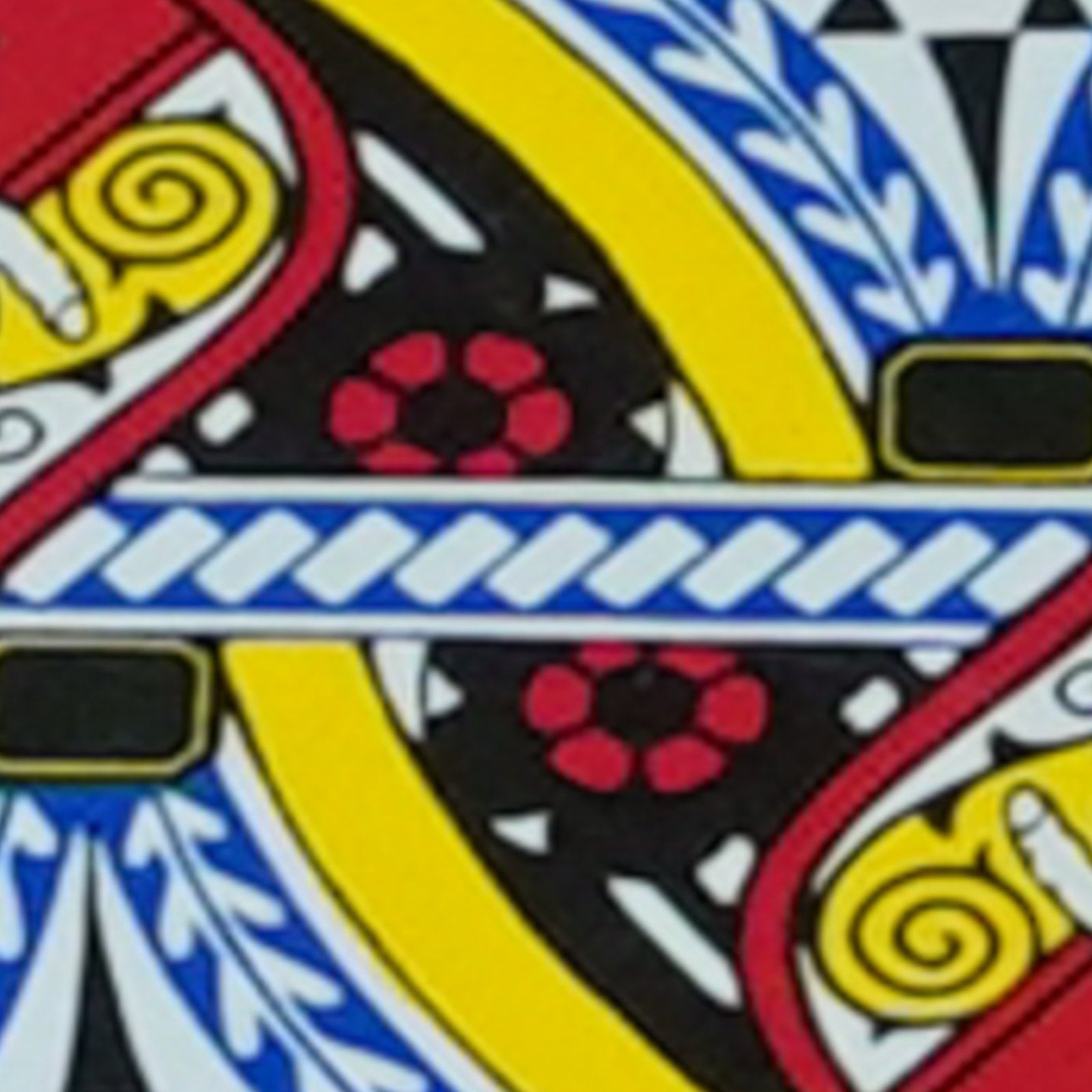 | 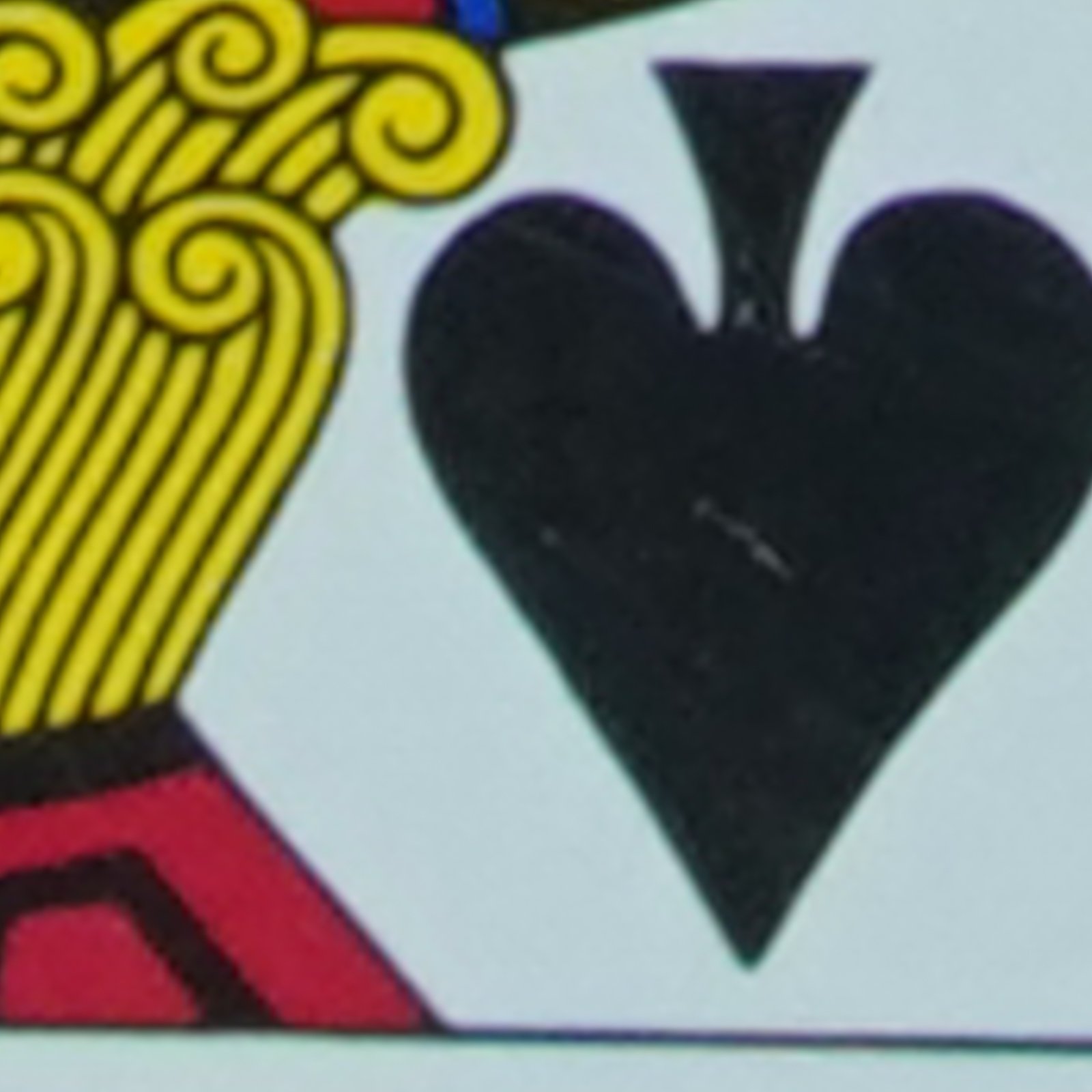 |
| F22 | 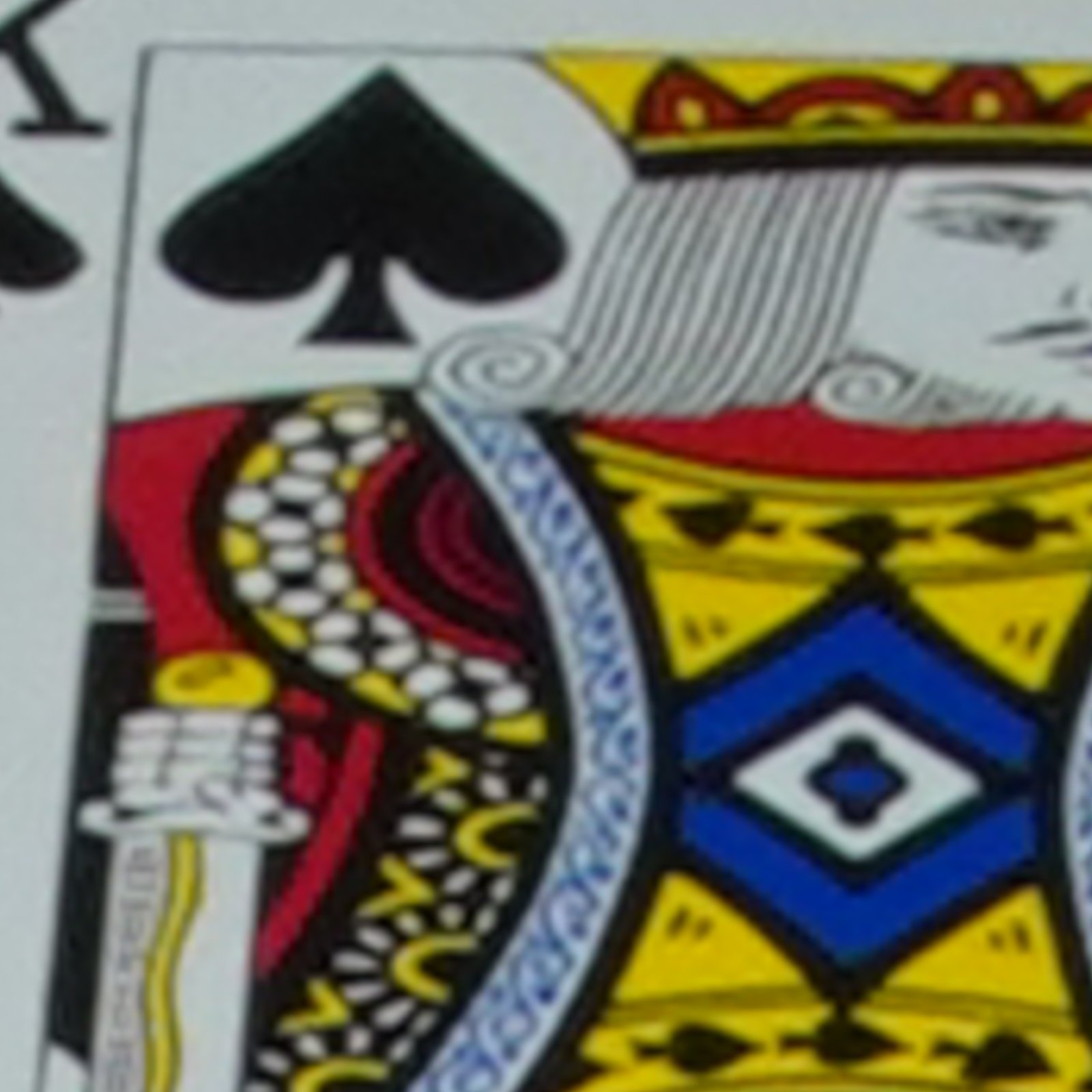 | 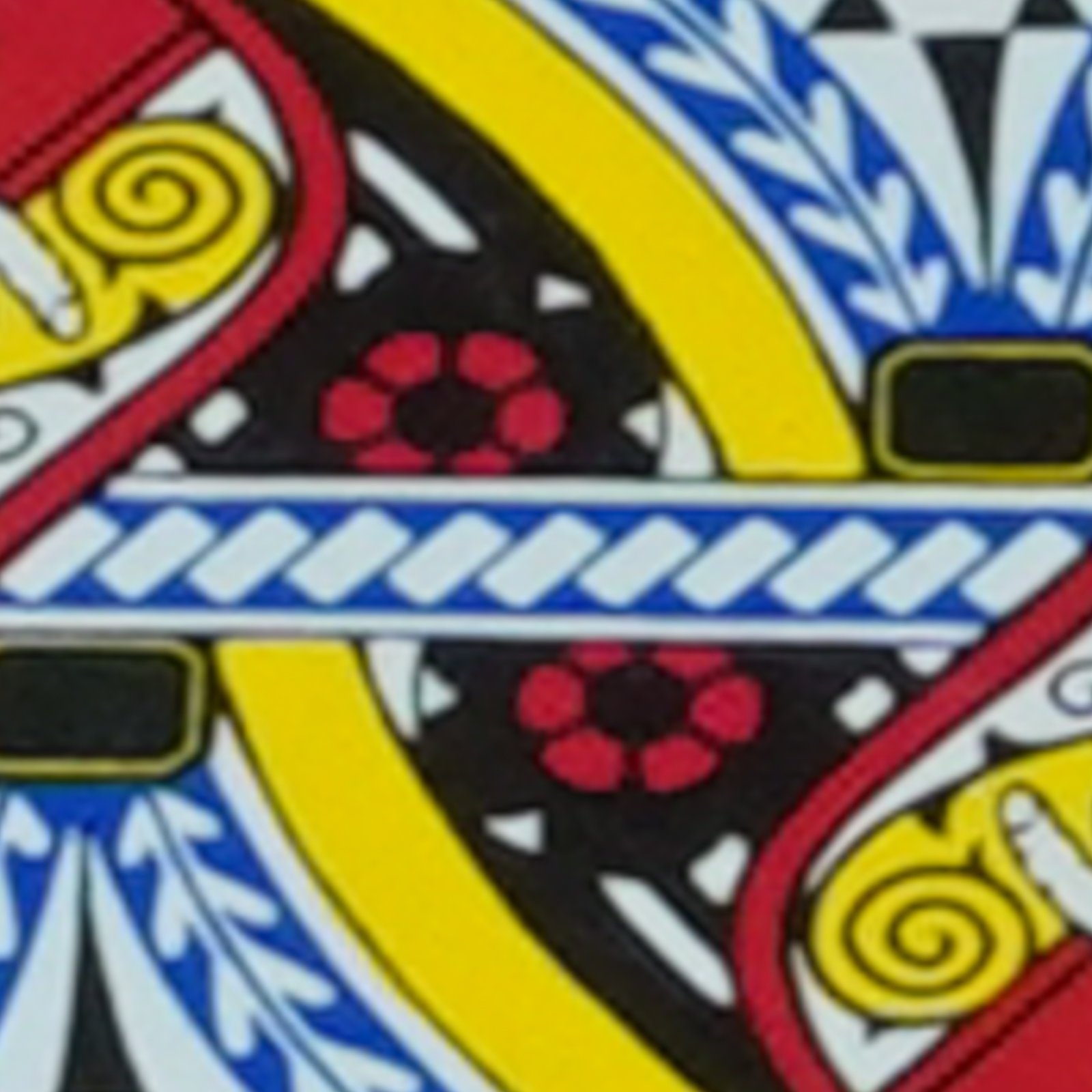 |  |
There is no visible CA in the center, in-focus section of the frame. The top section shows a hint of green, and the bottom shows a dimmer red fringe, at most apertures. It is most visible around the spade.
It is disappointing that even small apertures, up to F16, still show the presence of chromatic aberration, but the effect is minimal and should have no impact on regular shooting. It also means that built-in corrections tools should have no problem removing it without creating artifacts or degrading image quality.
Purple fringing
despite having built-in corrections, there were some occurrences of purple fringing in our tests with the FE 28-60mm, as can be seen in the cropped example below.
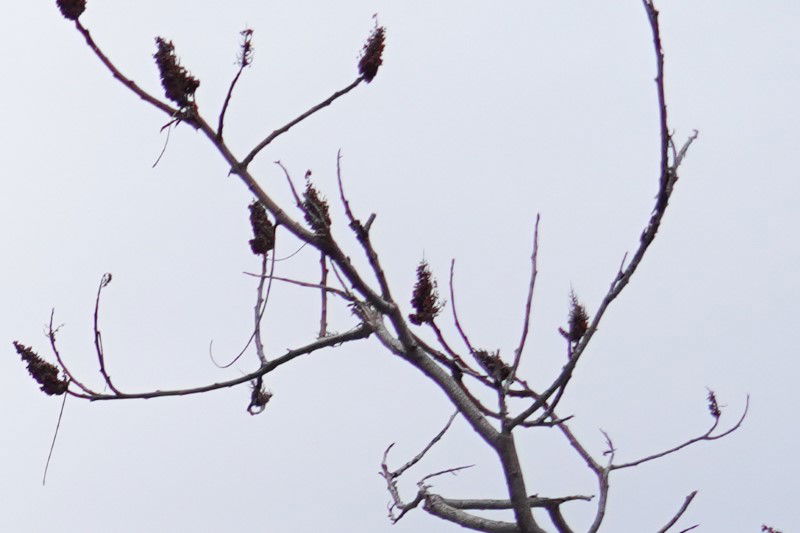
The effect is not dramatic but users should be aware of it, as this picture was captured in normal shooting conditions, with all the built-in CA corrections activated.
Distortion
Distortion refers to a lens’s ability to represent straight lines as straight lines… Wide angle lenses frequently generate barrel distortion, while longer focal lengths are more likely to cause pincushion distortion.
The FE 28-60mm’s distortion is automatically corrected by the A7C, something that cannot be disabled. this test thus evaluates the effectiveness of this correction.
We use a standard test pattern of straight lines and test at 28mm and 60mm.
| 28mm | 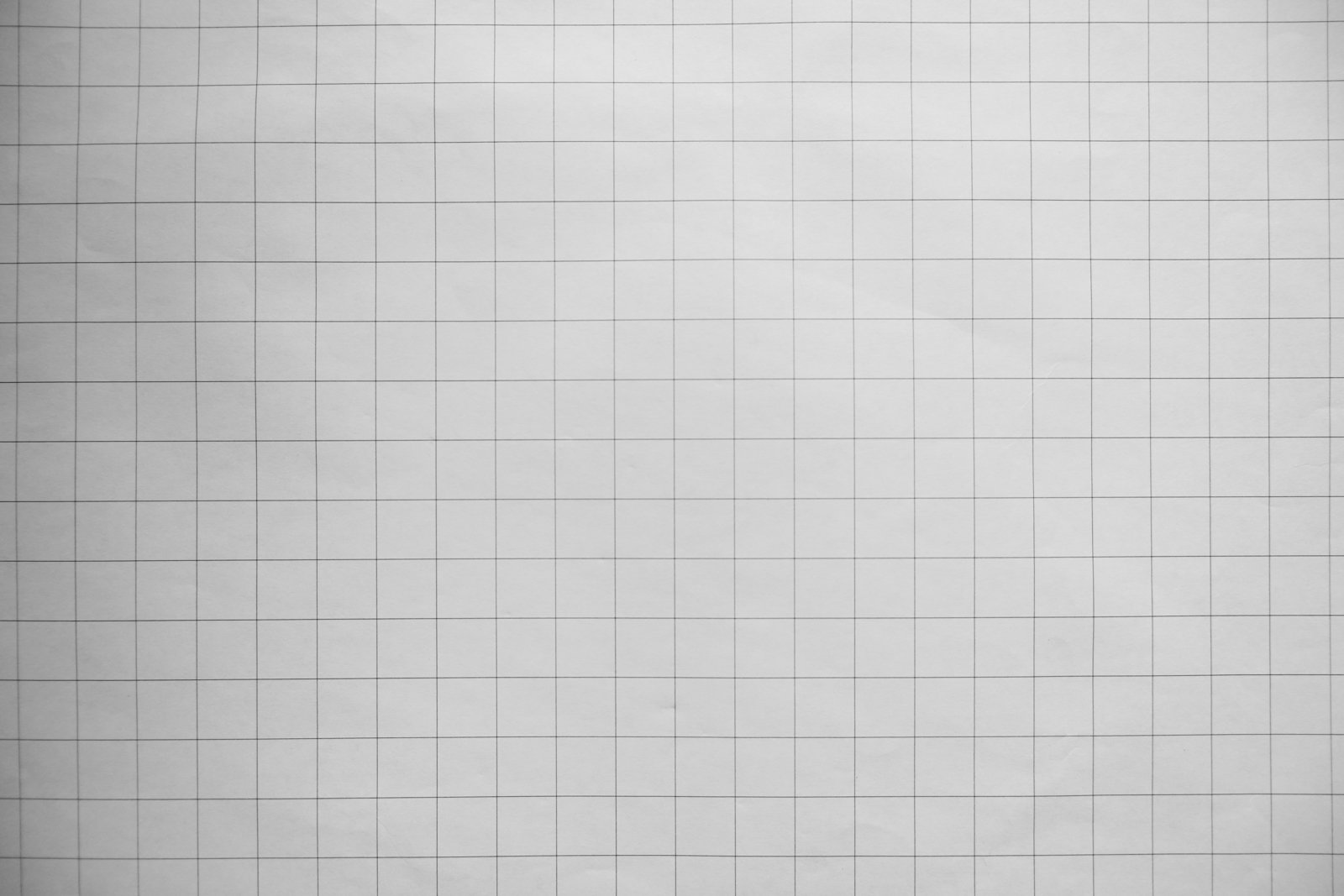 | 0.4% |
| 60mm | 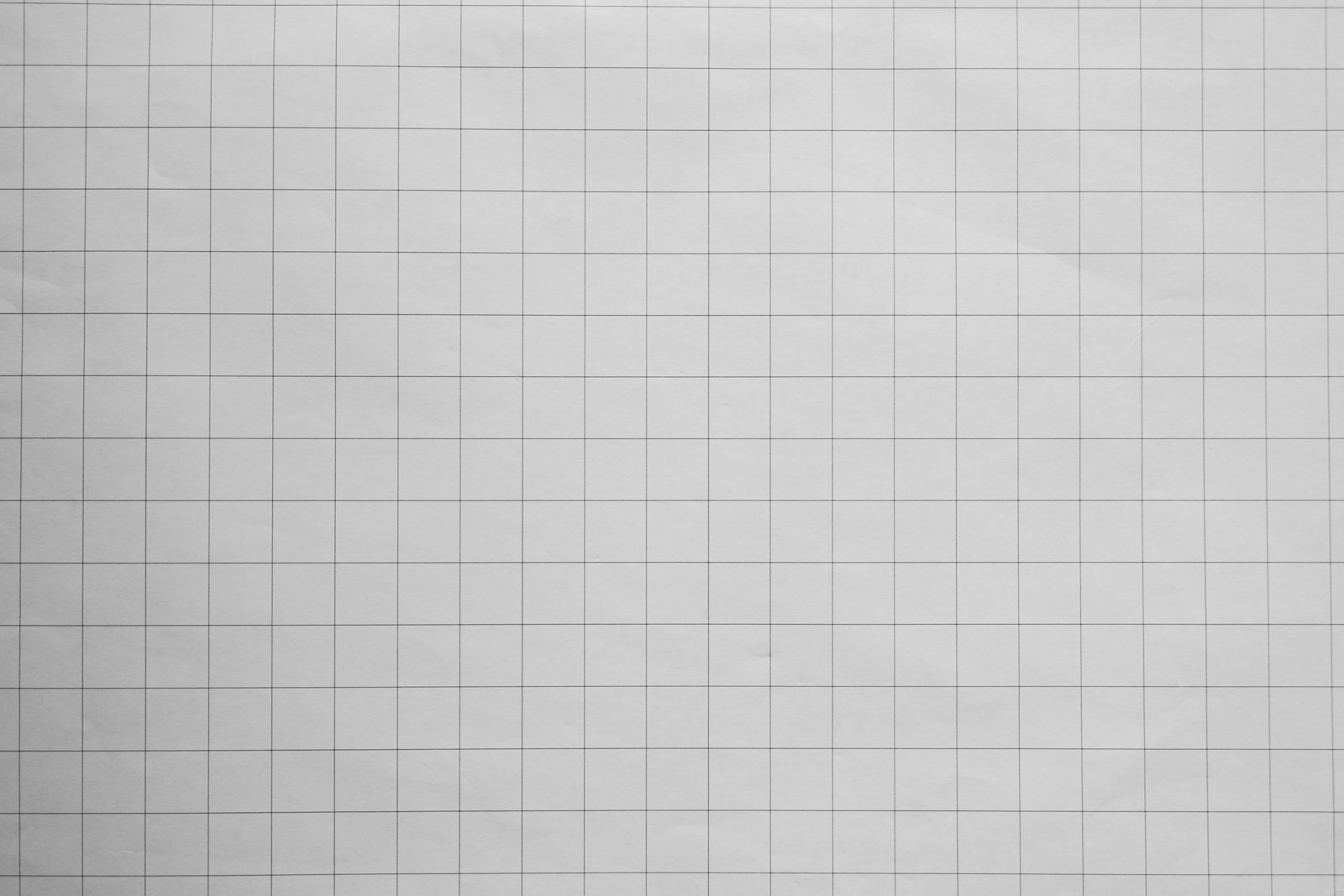 | -0.34% |
The effectiveness of the built-in correction ensures that distortion will not be an issue when using the FE 28-60mm.
Sample images
Here is a gallery of samples images captured with the Sony Fe 28-60mm. You can click on individual images for a larger view.

A7C, 28mm, F4, 1/25s, ISO 200 
A7C, 59mm, F5.6, 1/400s, ISO 800 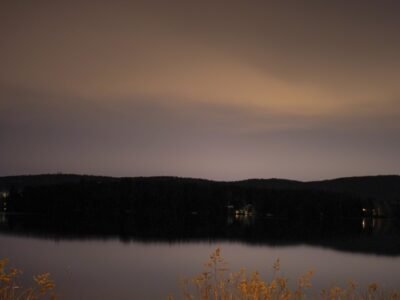
A7C, 60mm, F5.6, 2s, ISO 400 
A7C, 60mm, F5.6, 1/1000s, ISO 800 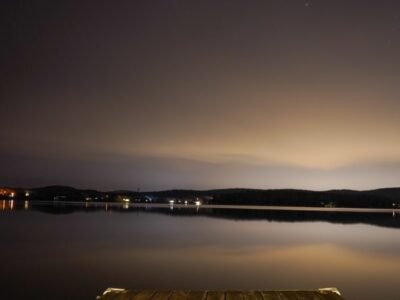
A7C, 28mm, F8, 25s, ISO 1250 
A7C, 60mm, F5.6, 1/1000s, ISO 100 
A7C, 60mm, F5.6, 1/1000s, ISO 1600 
A7C, 28mm, F22, 1/4s, ISO 50 
A7C, 28mm, F4, 1/4s, ISO 100 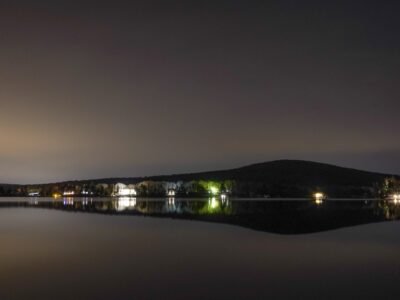
A7C, 28mm, F10, 30s, ISO 1250 
A7C, 60mm, F5.6, 1/100s, ISO 100 
A7C, 28mm, F5.6, 1/60s, ISO 1000 
A7C, 28mm, F5.6, 1/80s, ISO 1000 
A7C, 29mm, F4.5, 1/30s, ISO 2000 
A7C, 60mm, F5.6, 1/320s, ISO 400 
A7C, 60mm, F5.6, 1/1600s, ISO 400 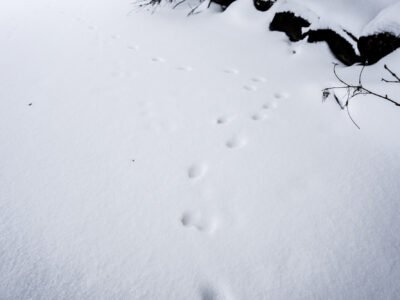
A7C, 28mm, F5.6, 1/500s, ISO 400 
A7C, 60mm, F6.3, 1/320s, ISO 400 
A7C, 28mm, F5.6, 1/800s, ISO 400 
A7C, 60mm, F5.6, 1/3200s, ISO 640 
A7C, 29mm, F5.6, 1/800s, ISO 1000 
A7C, 35mm, F16, 0.6s, ISO 50 
A7C, 60mm, F5.6, 1/1250s, ISO 400 
A7C, 28mm, F5.6, 1/1250s, ISO 500 
A7C, 60mm, F5.6, 1/800s, ISO 500 
A7C, 43, F5.6, 1/1250s, ISO 500 
A7C, 39mm, F16, 1/4000s, ISO 1600 
A7C, 35mm, F5.6, 1/200s, ISO 500 
A7C, 28mm, F6.3, 1/20s, ISO 100 
A7C, 60mm, F5.6, 1/160s, ISO 500 
A7C, 60mm, F5.6, 1/400s, ISO 500 
A7C, 60mm, F7.1, 1/4000s, ISO 500 
A7C, 28mm, F5.6, 1/2000s, ISO 500 
A7C, 28mm, F10, 1/4000s, ISO 500 
A7C, 28mm, F9, 1/4000s, ISO 2000 
A7C, 60mm, F5.6, 1/1250s, ISO 2000 
A7C, 28mm, F5.6, 1/1250s, ISO 2000 
A7C, 60mm, F5.6, 1/2000s, ISO 2000 
A7C, 28mm, F5, 1/1250s, ISO 2000
Conclusion
A few years ago, kit lenses were seen as cheap add-ons to entry-level cameras. Things have changed, and for the best.
While the Sony FE 28-60mm F4-F5.6 can be seen as a kit lens, doing so misses the point of that lens. The focal range and maximum apertures are certainly underwhelming, but that is a deliberate choice in order to produce a truly light and compact lens, ideally matched for the A7C body.
Made of plastic (except for the lens mount), with no buttons or switches and no included lens hood, the 28-60mm is barebones but tightly assembled and quite rugged. It features weather sealing and the retractable mechanism works flawlessly.
Optical performances are where the lens truly impresses and, in many ways, surprises. Sharpness is much, much better than what is expected from a kit lens. Center sharpness is excellent at all but the smallest apertures, and edges/corners are never that far behind. This is impressive, and is certainly a good reason to see the 28-60mm as more than a typical kit lens.
Chromatic aberration is also well controlled. It is present but minimal and should be hard to notice in use, especially since cameras automatically correct what small occurrences there are. There is a hint of purple fringing in specific scenes.
Bokeh is better than expected. There are some patterns visible around busy shapes, but in general the texture is smooth enough and highlights are well shaped. Distortion is automatically corrected by the camera, and the results are excellent; distortion is essentially absent.
The lens has two main optical weaknesses. The first is its handling of flare and ghosting. While not dramatic, it is often present, especially with light sources close to the edges of the frame. The second, and more important, is the dramatic vignetting at 28mm. Thankfully the camera can compensate this, but be aware that if left uncorrected, vignetting will negatively affect images. Digital corrections are fine, but requiring no corrections at all is even better.
Focusing is another area where the lens shines. Silent, fast, and perfectly capable of keeping up with Sony’s AF-C, the 28-60mm is a fine example of a lens that simply works and never leaves the user wishing for more.
In summary, Sony created a fine lens with the FE 28-60mm. By carefully balancing the specs and refraining from going overboard, especially with the focal range, the designers were able to produce a lens which has little of the kit lens and which is better described as a high-performance compact zoom for hiking and travel, ideally matched to the A7C camera body but suitable for any full frame (and even APS-C) camera.
Pros
- Light, compact and weather resistant
- Good handling despite the minimal size
- Fast and reliable autofocus
- Excellent sharpness except at small apertures
- Bokeh better than expected
- Little CA and PF (although still present)
Cons
- No AF/MF switch, relies on camera menu
- Strong vignetting
- Flare and ghosting present in most situations
- Price when purchased outside of a kit
Before You Go
Do you already own this lens? If you do, we’d love to hear your thoughts in the comments below.


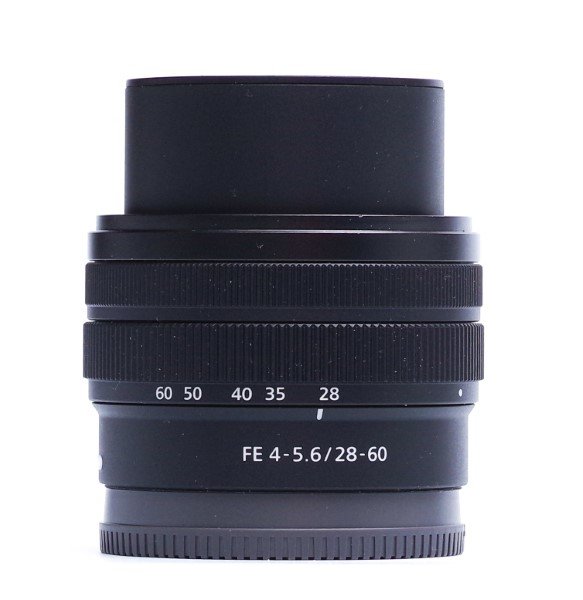
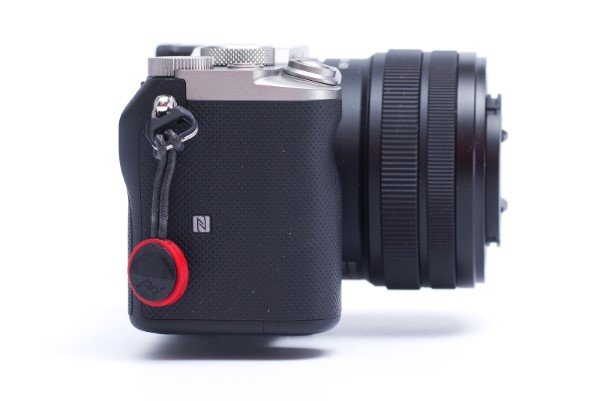
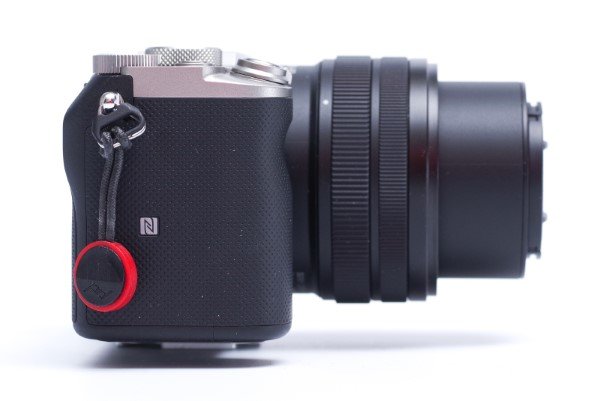
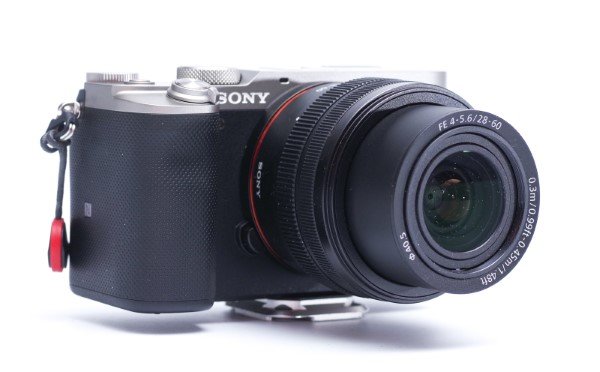






I have the 28-60 with an A7C since Nov 2023. Im very pleased with the results, and this test confirms all Ive seen, only a bit of flare and ghosting with bright points of lights, eg street lamps, has been any kind of issue. Colour rendition and contrast on the A7C in 14bit mode is really great, at least for my amateur enthusiast eyes! I realised the A7C wasn’t in 14bit mode, ‘long exposure NR’ was on.
I would like to invest further in a portrait or wide angle lens, but until I really have the need, this lens is fine for me.
I like it :-). I’ve been using it on my A7s ii and it keeps the overall weight down as a walkaround set-up.
Glad to hear that you are enjoying the 28-60mm Michel! 🙂
I agree with all except for the fast autofocus, at least in my situation. I really struggle with my A7C hunting for focus when indoors and in just sub optimal light conditions. Is this to be expected when in low light? Can I expect the system to struggle indoors compared to outside?
Hello Gareth!
Indoors is always darker than outside, even if our eyes adapt well enough that we don’t always notice the difference.
As shown in the chart, there is a significant difference between af speed in very low light and when it improves. This is to be expected.
Spot on review ! I got the lens with the A7C back in October 2020 as the early impressions of it were pleasing – and as part of the package it looked like a steal. Very glad I did, and I very quicky formed the view that ‘Kit Lens’ was not the correct description for the 28-60.
FM (where I spend a lot of time) have similar findings. It is a great companion for the A7C in particular.
Thank you for commenting, and for taking the time to read!
How does this lens compares, in the a7c, with the sony zeiss 16-70 f4, in a a6300. I mean, is it worth that kind of “upgrade”?
Hi Joao!
I have not tested the Zeiss personally. I hear of comments about it, people seem to like it in general and it has an excellent reputation regarding optics. It certainly offers a wider range and a faster aperture. In that regard, the upgrade would not be with the lens, but with the added power of a full frame sensor.
I have the FE2860 sitting in a box waiting on the alpha1 to arrive.
90% of my shooting is with the FE200600 but it is nice to have a pocketable lens
for ‘what-if’ environmental shots. Historically the pocket lens has been the Rokinon 18/2.8 and like
the FE2860 it won’t pull your pants down due to weight…the 2860 will provide a lot more versatility
and with me betting on the alpha1’s higher ISO performance the slowness of this little kit-zoom should
be mitigated and with the 50mpx cropability the terminal 60mm of reach also boosted.
Time will tell 🙂
I enjoy your blog
Thanks for the comments! Look back to further reviews in the future!
Since buying this lens, I’ve retired my Zeiss 24-70 The 28-60 matches the Zeiss, which was my sharpest zoom. I never went as wide as 24, so 28 is fine and I make up the shortfall of 60 vs 70 with a tad of cropping.
I mostly shoot at small apertures because I like depth of field. So the 28-60 delivers what I need in a lightweight compact package.
Thank you for commenting Alan!
Interesting observation about the Zeiss. Indeed within its limitations of range and aperture the FE 28-60 leaves little to be desired.